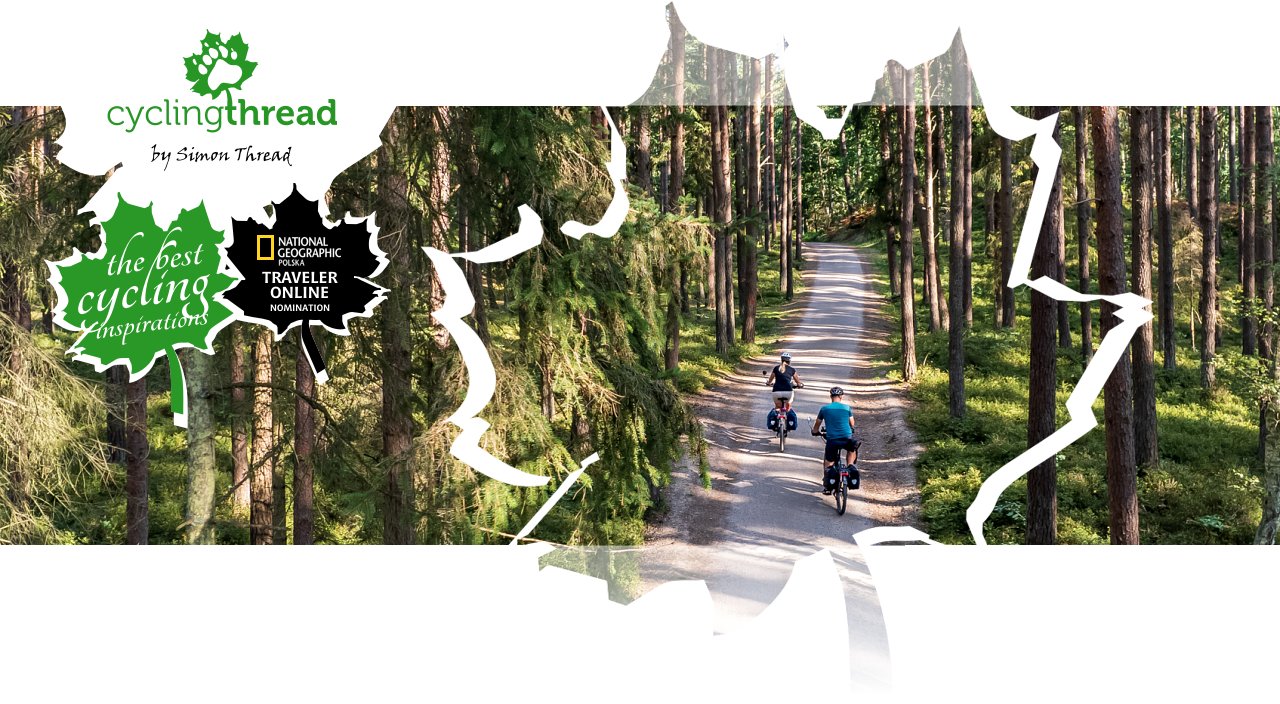
Cycling the Baltic Sea coast: EuroVelo 10 in Pomorskie
More adventurous - that’s the simplest way to describe the EuroVelo 10 cycling route along the Baltic Sea in the Pomorskie (the Pomeranian region), especially when compared to the section running through West Pomerania. The former R10 cycling route here often feels more natural and takes you through a much more diverse range of landscapes in Pomorskie. Along the Pomorskie stretch of EuroVelo 10 and its connecting routes - now marked with the iconic R10 signs - you’ll pass through places like the Słowiński National Park, the Żarnowiecka Upland, the Hel Peninsula, the Tri-City metropolitan area, the Vistula Spit and the Vistula Delta.
See also the Velo Baltica - the EuroVelo 10 in West Pomerania.
Route on the map
GPX file (GPS track): cyclingthread.com-pomorskie-2023.gpx
Cycling the Baltic Sea - table of contents
- The Baltic Sea cycle route in Pomorskie
- Avoiding Kluki – the route now bypasses Gardno and Sarbsko
- Hel Peninsula and Vistula Spit with their R10 connectors
- Advection fog as a coastal welcome
- In Ustka, a torch on a church once guided sailors
- New cycling bridge in Ustka
- EuroVelo 10 rarely runs right by the sea
- New concrete pavement near Ustka
- To Wytowno on an old railway path
- Unforgettable moments at the ravine in Poddąbie
- Słowiński National Park and first rough patches on the route
- Koga WorldTraveller 2023 on the EuroVelo 10 route
- Views of the wild Słowiński National Park
- The legendary Kluki now off the EuroVelo 10 route
- EuroVelo 10 brings opportunity to small towns
- The dome of the Atlantic heath instead of Kluki
- Viewing platform with a view of the dunes and Rowokół
- Five kilometers of sandy struggle
- Baltic Sea Fishing Museum in Łeba
- Following a new section toward Osetnik
- Sasino manor and Stilo lighthouse
- One of the most beautiful sections of EuroVelo 10
- A nuclear power plant on the cycling route
- Plenty of good, wide, firm surfaces along the route
- The best rail-trail in the region
- Kłanino - a stunning manor and an armor museum
- A welcoming town square in Puck
- Seal Hunter Settlement and the Jan III Sobieski Palace
- Beka, Mostowe Błota, and the cliff in Mechelinki
- EuroVelo 10 crosses the Tricity
- The story of Polish emigration at Polska Street 1
- EuroVelo 10 on Gdańsk's bike paths
- Amber treasures inside the historic Great Mill
- The largest food hall with a touch of history
- Beyond the Tricity: Vistula Spit and the Vistula Delta await
- Unexpected charm of the Vistula Delta
- A meal and some heritage in Cyganek
- One last great cycling stretch
- Almost final stop: Nowy Dwór Gdański
- To Latvia, Green Velo, or home
- Taking the train with a bike on EuroVelo 10
- Which is better - Pomorskie or West Pomerania?
- EuroVelo 10 in Pomorskie among Poland's best
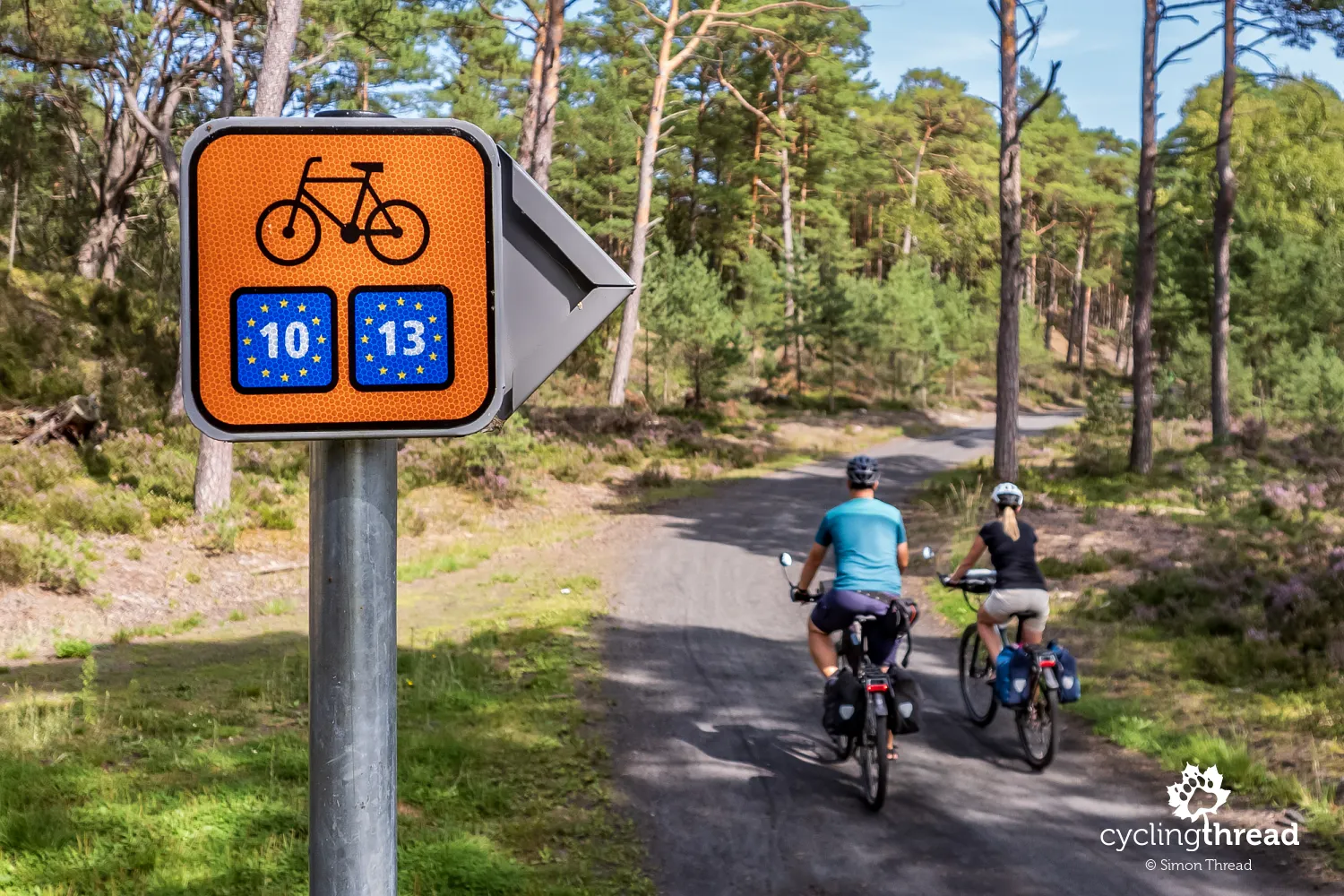
The Baltic Sea cycle route in Pomorskie
The popular cycling route along the Baltic Sea coast, previously known as R10, has been transforming into EuroVelo 10 over the past few years. Thanks to various national and international projects funded by the European Union, the route has been seeing upgrades and improvements aimed at enhancing the experience of those cycling along the Baltic Sea. Several sections have been resurfaced with smoother, more comfortable pavement, and in some areas, the official course of the route has been updated. Stretches that once passed through scenic but hard-to-ride areas have been replaced with easier, more family-friendly alternatives - perfect for those with kids or cyclists who prefer less physically demanding terrain. These refreshed conditions are finally starting to match the standard of other well-regarded routes in the EuroVelo network.
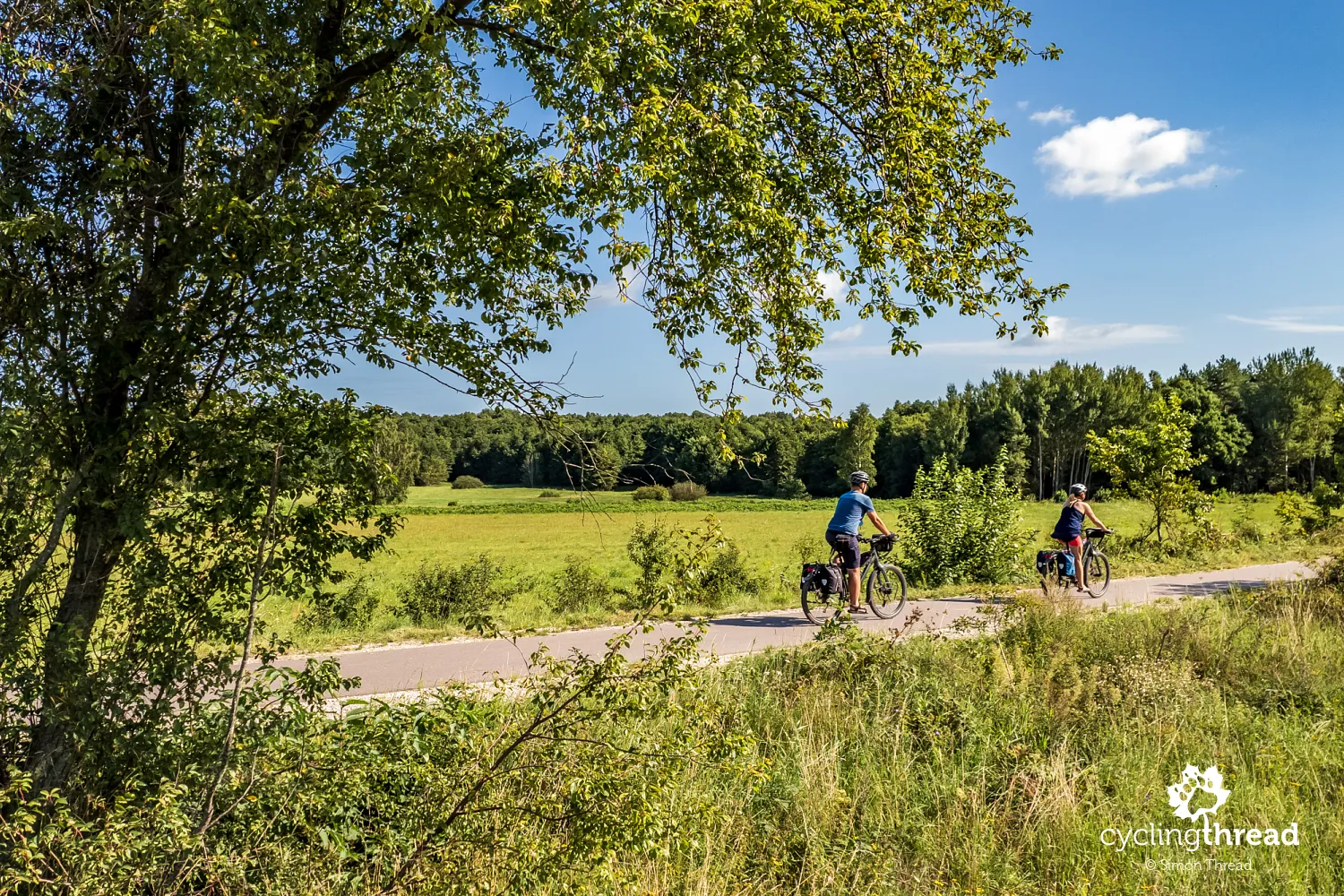
Avoiding Kluki – the route now bypasses Gardno and Sarbsko
One of the most talked-about changes to the EuroVelo 10 route in Pomorskie is that the Baltic cycling route no longer passes through the famous “Kluki.” For years, cyclists used this nickname for the Ciemińskie Bog - part of the Bagna Izbickie nature reserve, located south of the village of Kluki. The route was also shifted from the northern to the southern side of Lake Gardno, just past the town of Rowy. Similarly, the path near Łeba was moved from the northern to the southern side of Lake Sarbsko. Seasoned cyclists will recognize these changes as a welcome retreat from the old R10 sections that were full of sand, mud, and tree roots - elements that definitely brought adventure, but not smooth riding. The route has also been adjusted around and within the Tri-City area, and even across the Vistula Delta. The main EuroVelo 10 no longer travels across the Hel Peninsula or the Vistula Spit - both are now accessible via R10 connecting routes.
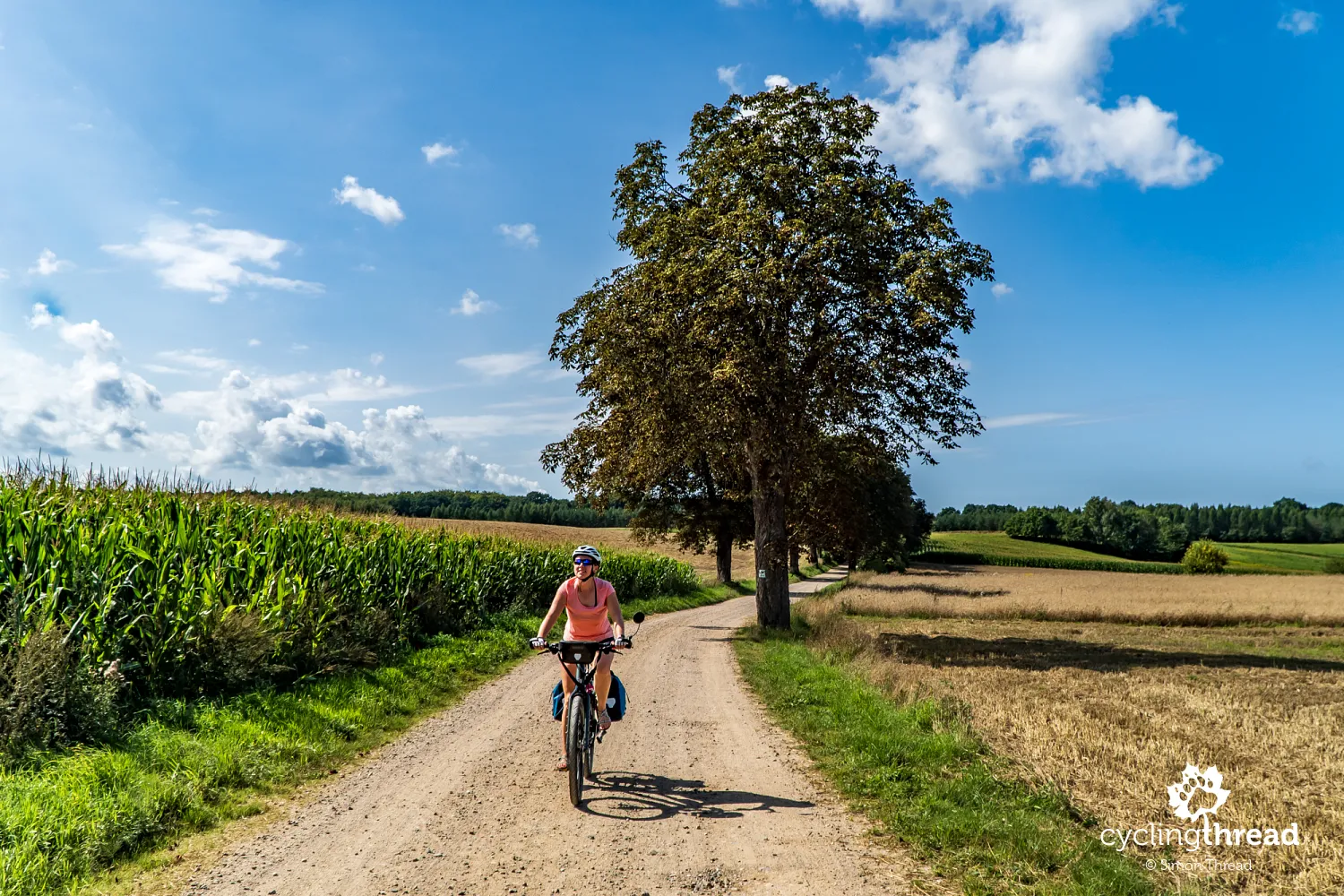
Hel Peninsula and Vistula Spit with their R10 connectors
To cycle to the bustling Hel Peninsula - with stops in Jastarnia, Jurata and Hel - you'll need to branch off the main route in Karwieńskie Błoto Drugie and follow the R10 connector through Jastrzębia Góra and Władysławowo. It's worth noting that one of the best ways to travel between Hel and Gdańsk (or vice versa at the start of your trip) is to hop aboard a cyclist-friendly catamaran operated by Żegluga Gdańska. On the other side of the coast, the route to Krynica Morska and Piaski on the Vistula Spit, also marked R10, splits from EuroVelo 10 in the village of Jantar. You can explore the entire network of EuroVelo 10 and its R10 connectors on the official map of Pomeranian Cycling Routes. The current stretch of EuroVelo 10 in Pomorskie - running from the border with West Pomerania through Ustka, Rowy, Główczyce, Łeba, Białogóra, Dębki, Puck, the Tri-City, Jantar, Nowy Dwór Gdański and ending in Elbląg - covers around 300 kilometers.

Advection fog as a coastal welcome
Ustka and the Słowińskie Coast welcomed us in a truly unusual way. We arrived during a few days when a dense, low-lying advection fog covered the entire central Baltic coastline. Visibility dropped to just a few dozen meters. And yet, the fog layer was thin enough for sunlight to softly filter through, giving the seaside scenes a unique glow. Ustka looked surreal in this weather - on one side, beachgoers scanned the sky in vain for the sun, while on the other, a hazy pirate-style tourist ship loomed in the fog, seemingly made for this kind of atmosphere. For those chasing a tan, it was definitely a wasted day - no one got sun-kissed. But for us cyclists, it was a rare meteorological show that would surprise us even more later.
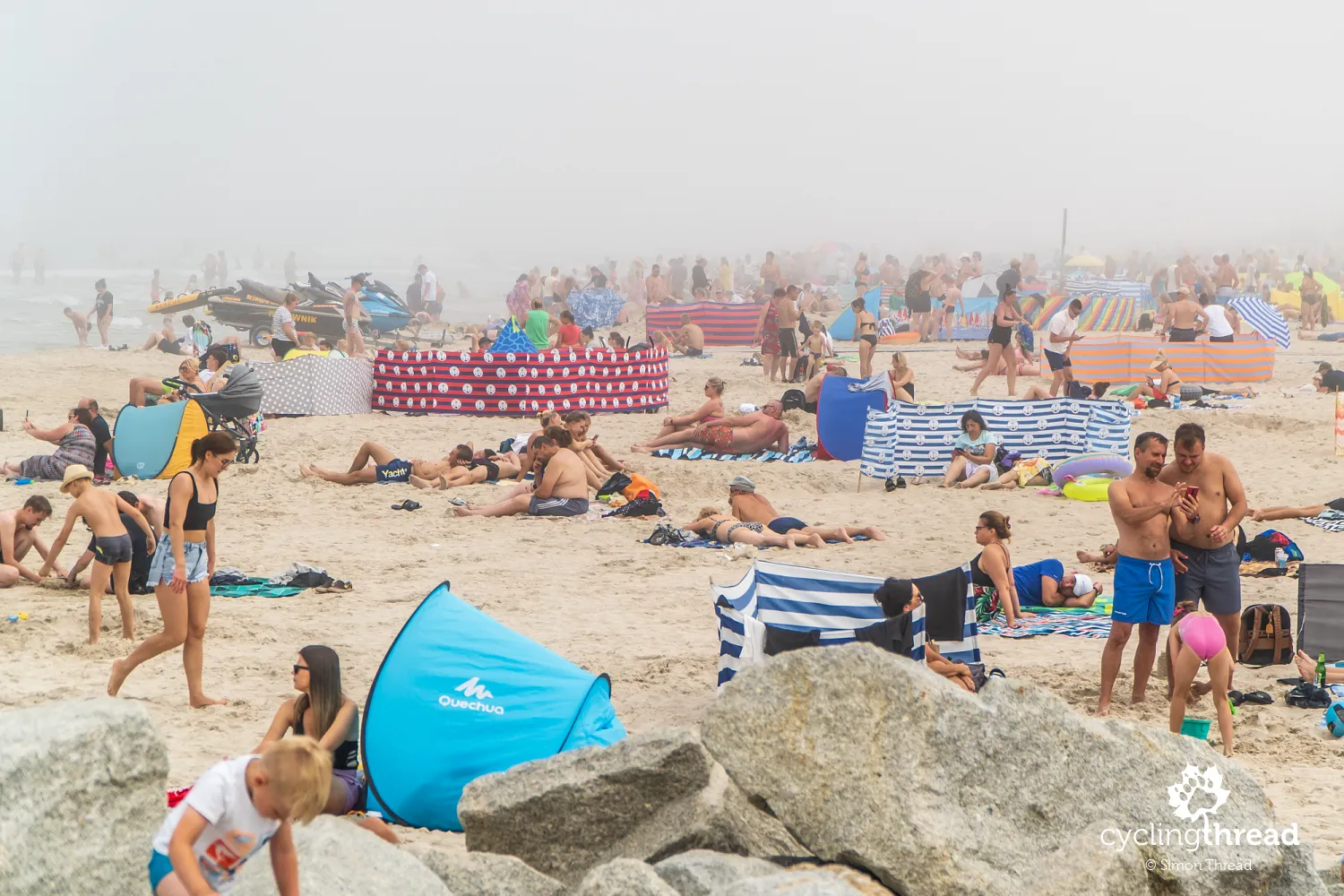
In Ustka, a torch on a church once guided sailors
The fog didn't stop us from taking a short spin around Ustka. It's one of the few coastal towns where the old town still stands, with former fishermen's houses between Marynarki Polskiej and Czerwonych Kosynierów streets. Over a decade ago, a revitalization program transformed this part of the town, and in the so-called Captain's Corner - now known as John Paul II Square - you'll find a model of the original Church of St. Nicholas. A torch once lit atop its tower served as Ustka's very first lighthouse. The current lighthouse - modest and nearly 150 years old - stands about 200 meters away, at the mouth of the Słupia River. This spot also marks the beginning of Ustka's Seaside Promenade, where, back in the day, Emperor Otto von Bismarck enjoyed his meals in a local restaurant, with his table kept in a place of honor until 1945.
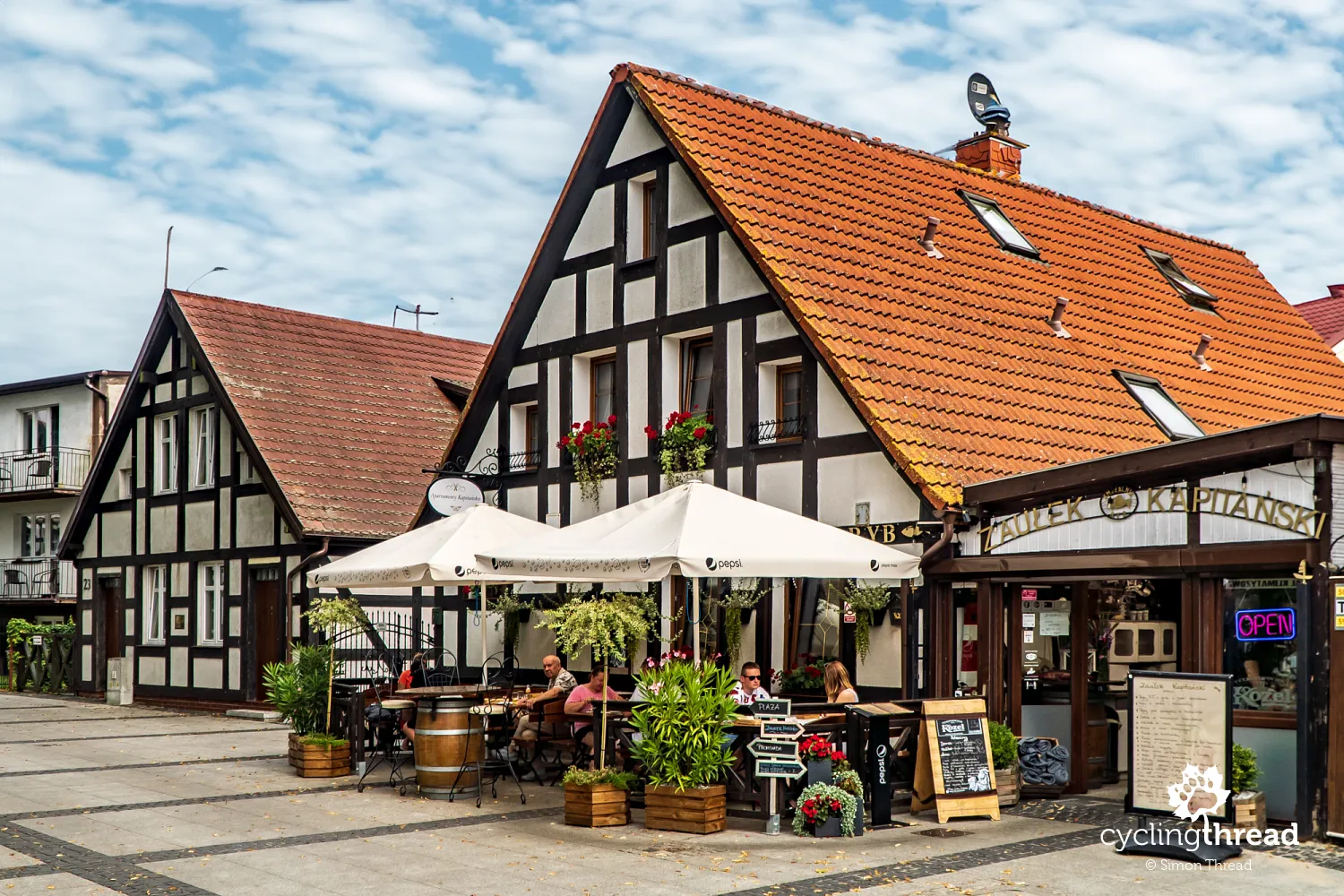
New cycling bridge in Ustka
Ustka lies on the edge of the Pomorskie region and is one of the first places where you can spot investments made along the Pomorskie section of EuroVelo 10. The ride into town from West Pomerania is fairly comfortable, though not particularly scenic - first along a short stretch of concrete before Zaleskie, then along a mix of bike paths and shared pedestrian-cycling paths beside route 203. In Ustka itself, almost directly across from the train station but on the opposite side of the Słupia River, a new cycling bridge has been built. It offers a quick shortcut for riders who'd rather bypass the town center. Nearby, also on the Słupia, a new rest area has been created - perfect not just for cyclists, but also for kayakers navigating the popular waterway.
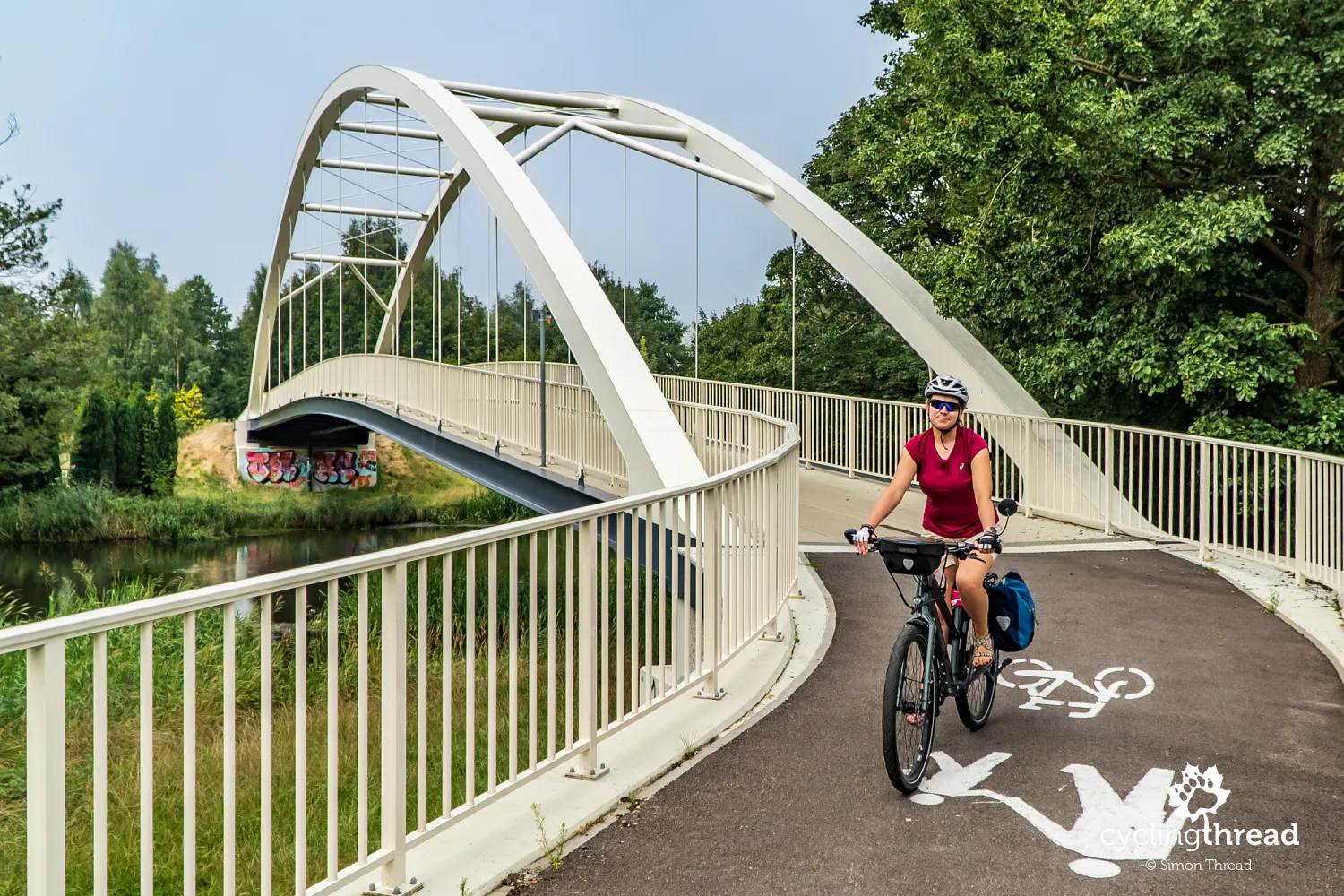
EuroVelo 10 rarely runs right by the sea
One thing that stands out about the Pomorskie section of EuroVelo 10 is that it never actually hugs the shoreline. That's due to the natural layout of the region - most of the Baltic coast in Pomorskie is made up of wooded cliffs, where building cycling infrastructure would be nearly impossible. Luckily, there are still plenty of moments to connect with the sea - both in coastal towns and in-between. The first opportunity comes just past Ustka, in the village of Zapadłe, from where a short paved road (just over a kilometer) leads to the hamlet of Orzechowo. Here, you'll find the scenic mouth of the Orzechowa River and towering cliffs that can reach up to 20 meters high. Every year, during storms, the cliffs erode and the sea claims more than a meter of land - trees and all. I spent a few unforgettable moments here two winters ago, during a ride around the Słowiński National Park. Back then, I was struck by the power of the sea; this time, we were mesmerized by the misty scenes at one of the Baltic's most beautiful spots.
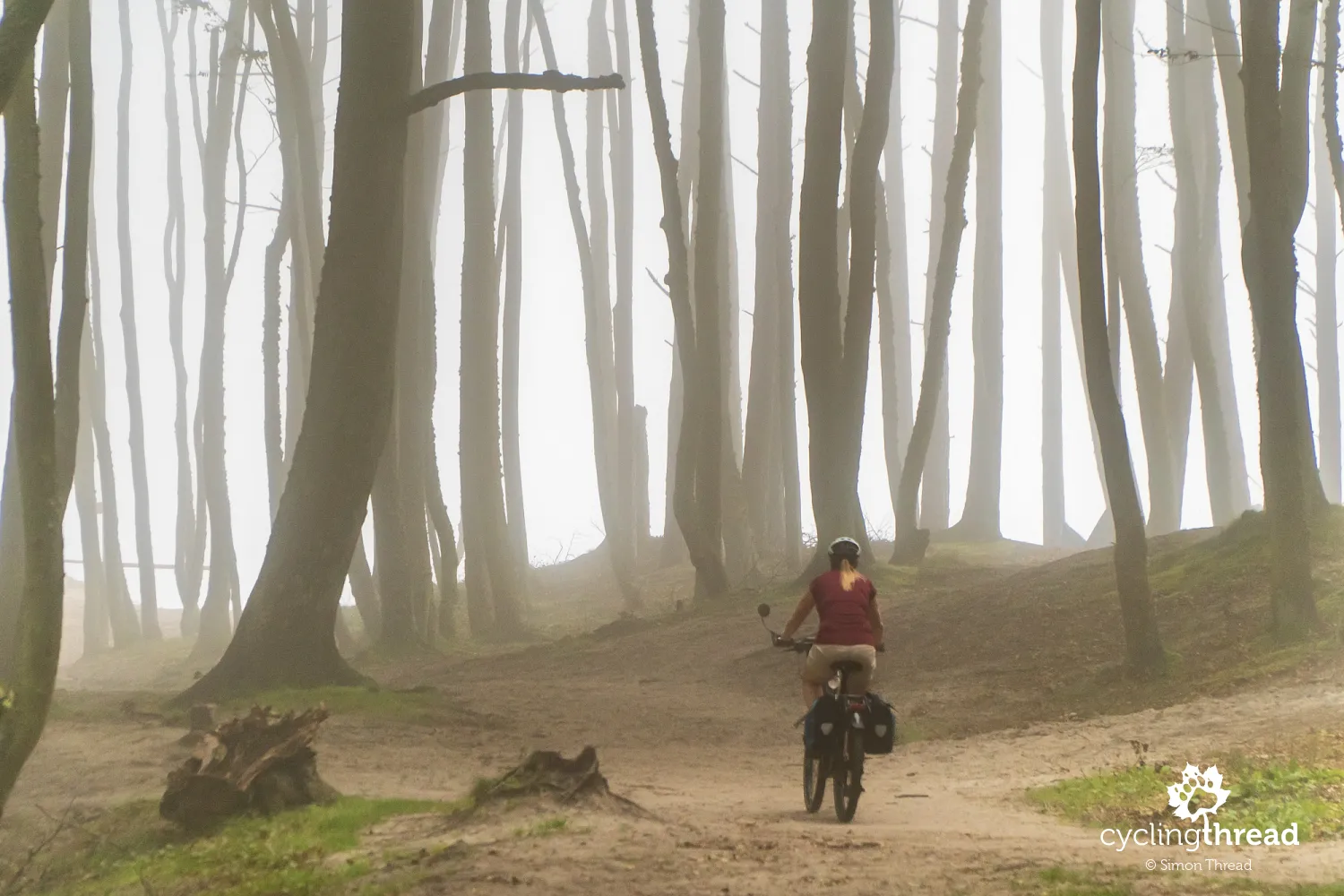
New concrete pavement near Ustka
If it weren't for the State Forests' holiday center in Orzechowo, the route could take a shortcut to Wytowno via a paved track along the Orzechowo Dune. Unfortunately, the gates to the resort are sometimes closed, which means you have to ride back the same way to Zapadłe. This is also where you'll first encounter a concrete segment surface - something rarely seen on Polish bike routes. It's a major improvement, considering that just over a year ago, the road here was often completely covered in deep mud. Now, it's a smooth, well-laid surface with neatly joined concrete segments. The only thing that takes getting used to is the unusually light color under your wheels. And while concrete bike paths are still uncommon in Poland, places like Brandenburg have shown us similar surfaces used in flood-prone areas across Europe.
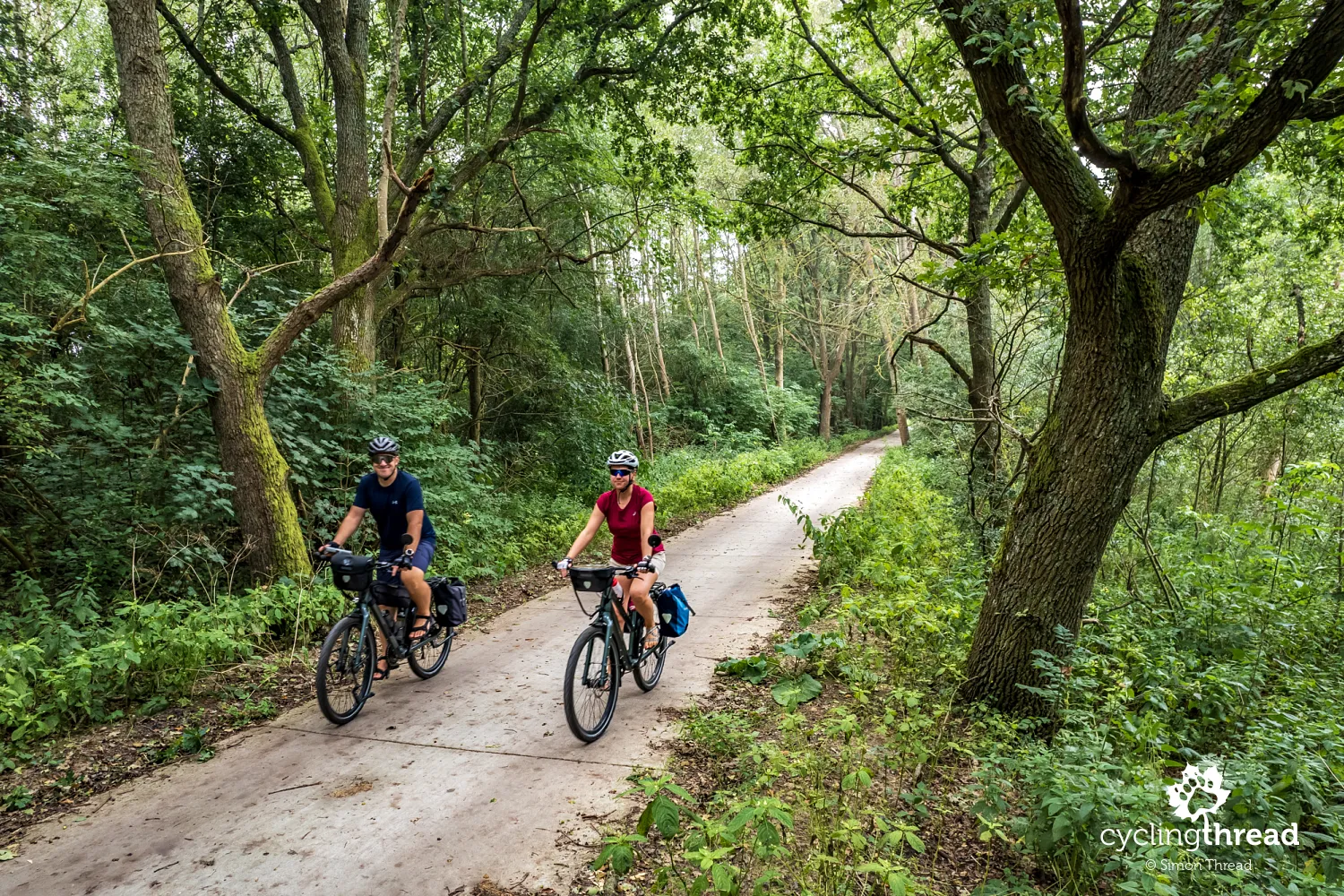
To Wytowno on an old railway path
At the point where the route shifts - EuroVelo 10 veers left while the old R10 used to go straight - you'll find a charming little cyclist rest stop. It features hanging white-painted bicycles, which might bring to mind the symbolic “ghost bike,” often marking a tragic cyclist accident. A few hundred meters farther on, you enter the village of Wytowno, home to the ruins of a baroque manor and a 17th-century church with a 14th-century tower. An information board at the rest stop also explains that the section you just rode was once a railway line connecting Ustka to Kępno Słupskie before 1945. If more of the abandoned line were turned into a cycling path, it could create a convenient 30-kilometer connection from Ustka to Smołdzino - bypassing the often-crowded town of Rowy. I rode it last year during the stormy January weekend I mentioned earlier.
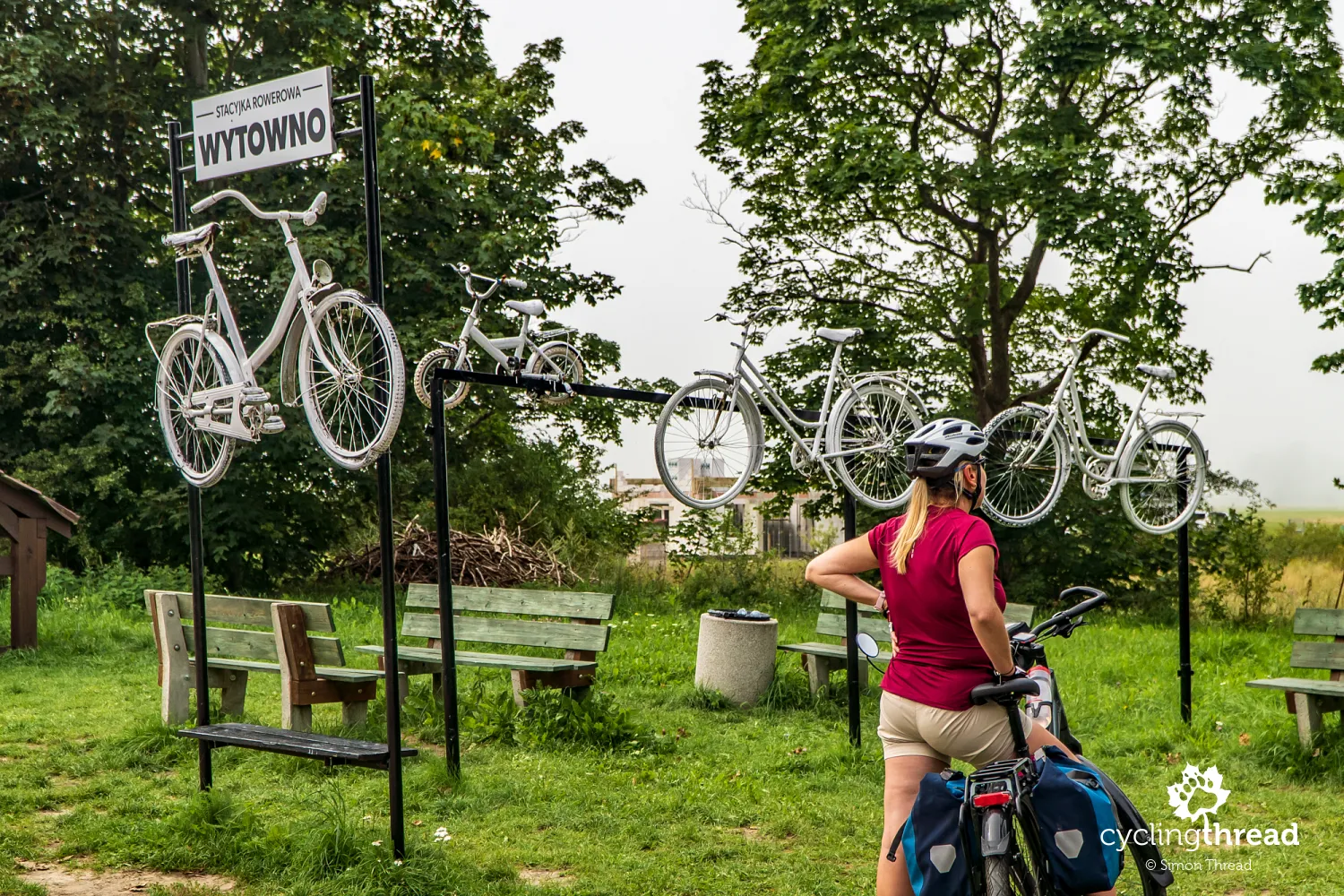
Unforgettable moments at the ravine in Poddąbie
Some of the most magical fog scenes we experienced came from the forest near the ravine in Poddąbie. To reach it, turn left at the first houses in the village and follow an easy forest road for about 800 meters - a path often used by holidaymakers staying in Poddąbie. In the dense, shaded woods, the sunlit fog created an even more mysterious vibe than in Orzechowo - like something out of a movie set. Thanks to the dramatic backlighting through the trees, I managed to capture one of my all-time favorite cycling photos, showing the silhouette of the small bridge over the ravine. Near the bridge, you can also spot traces of the old village of Alte Strand (Old Shore), destroyed by a violent storm in 1914. That's when Neu Strand (New Shore) was established - the beginning of today's Poddąbie.
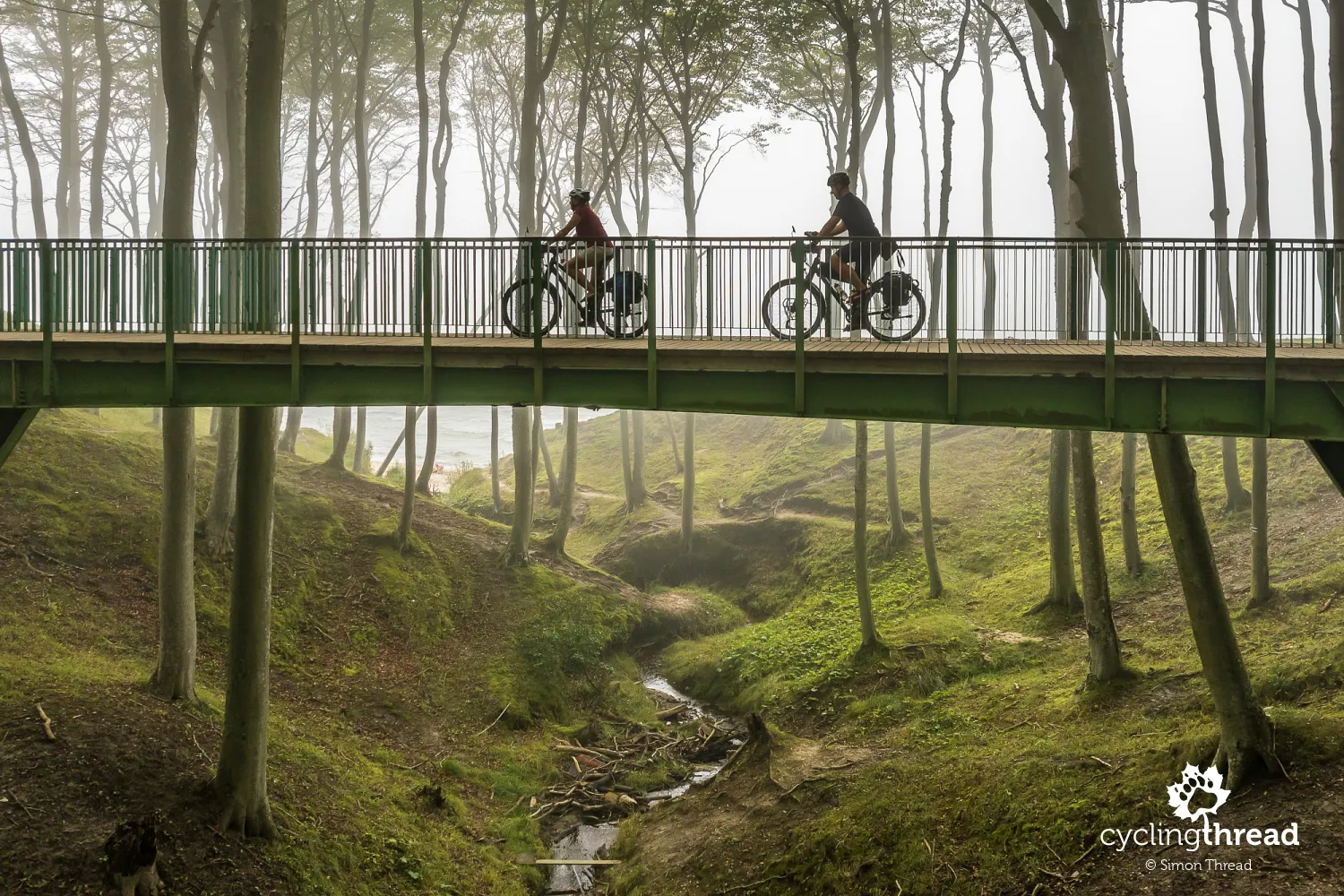
Słowiński National Park and first rough patches on the route
After reaching Rowy - partly riding in a bike lane marked in our direction (too bad it's not two-way!) - we were happy to find a popular fish bar right by the harbor. Recharged, we took a quick peek at the sea and continued along the new EuroVelo 10 segment around Lake Gardno. I still have good memories of the old northern stretch of R10, but this time we followed the new southern route. This section is one of those places where upgrades are slow to come - even though they're urgently needed. While bumpy old concrete slabs might offer a bit of a thrill for strong, adventurous cyclists, it's a far cry from enjoyable for families with trailers. Fortunately, this stretch is on the list for improvements in the second stage of the Pomeranian Cycling Routes development plan.
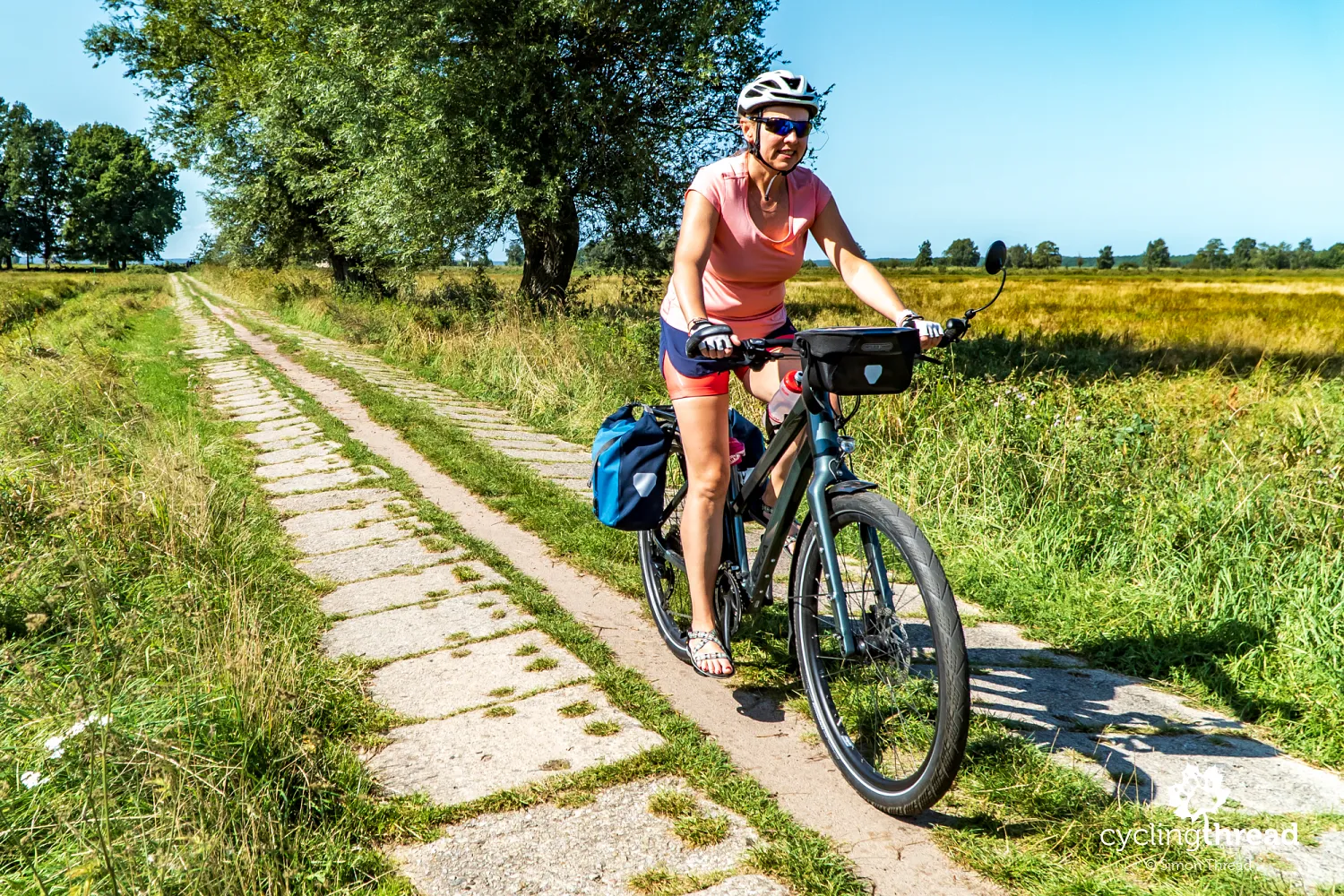
Koga WorldTraveller 2023 on the EuroVelo 10 route
With the rough patches in mind, we brought along our new bikes for this trip - the Koga WorldTraveller 2023. These are pure touring bikes, maybe even better described as expedition-ready machines, made by one of the most trusted brands in the travel biking world and sold in Poland by the friendly folks at the Rowery Stylowe shop. Just letting out a bit of air from the wide tires (much wider than standard trekking bikes) helped take the edge off bumpy rides in the Słowiński National Park. That same width came in handy in sandy stretches between the villages of Gać and Żarnowska. Where trekking wheels sank in, our over-2-inch Kogas kept pushing forward like no road was too much for them. We didn't need big panniers this time - everything fit perfectly into a smaller set mounted up front.
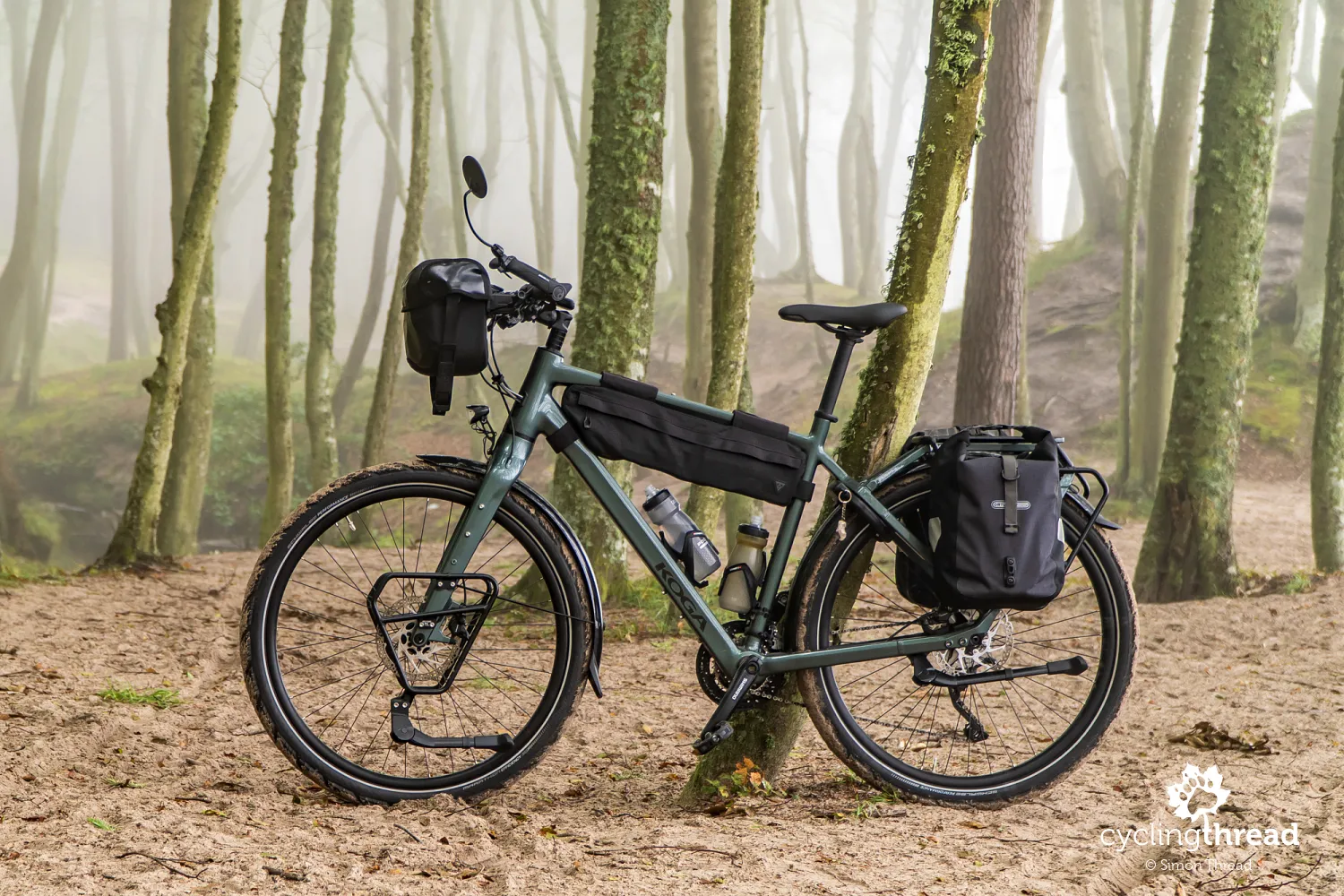
Views of the wild Słowiński National Park
One of the highlights in this area is a wooden observation tower standing on the shore of Lake Gardno. Getting there isn't the easiest - when we visited, it took a bit of agility to walk across narrow planks laid over the very marshy ground. But the view from the top makes it all worthwhile. It's one of those places where you can see with your own eyes what's usually only visible to drones. From the tower, you can spot Rowy, Gardna Wielka, the distinct Rowokół Hill, and the Czołpino lighthouse perched on a tall dune. The route runs along the edge of Słowiński National Park here, but the whole area feels like one of the most untamed, most natural places on the journey. Lake Gardno is the second-largest coastal lake in Poland (after nearby Łebsko), and the eighth-largest overall. Both lakes are slowly shrinking as sediment from rivers continues to build up with nowhere to go.
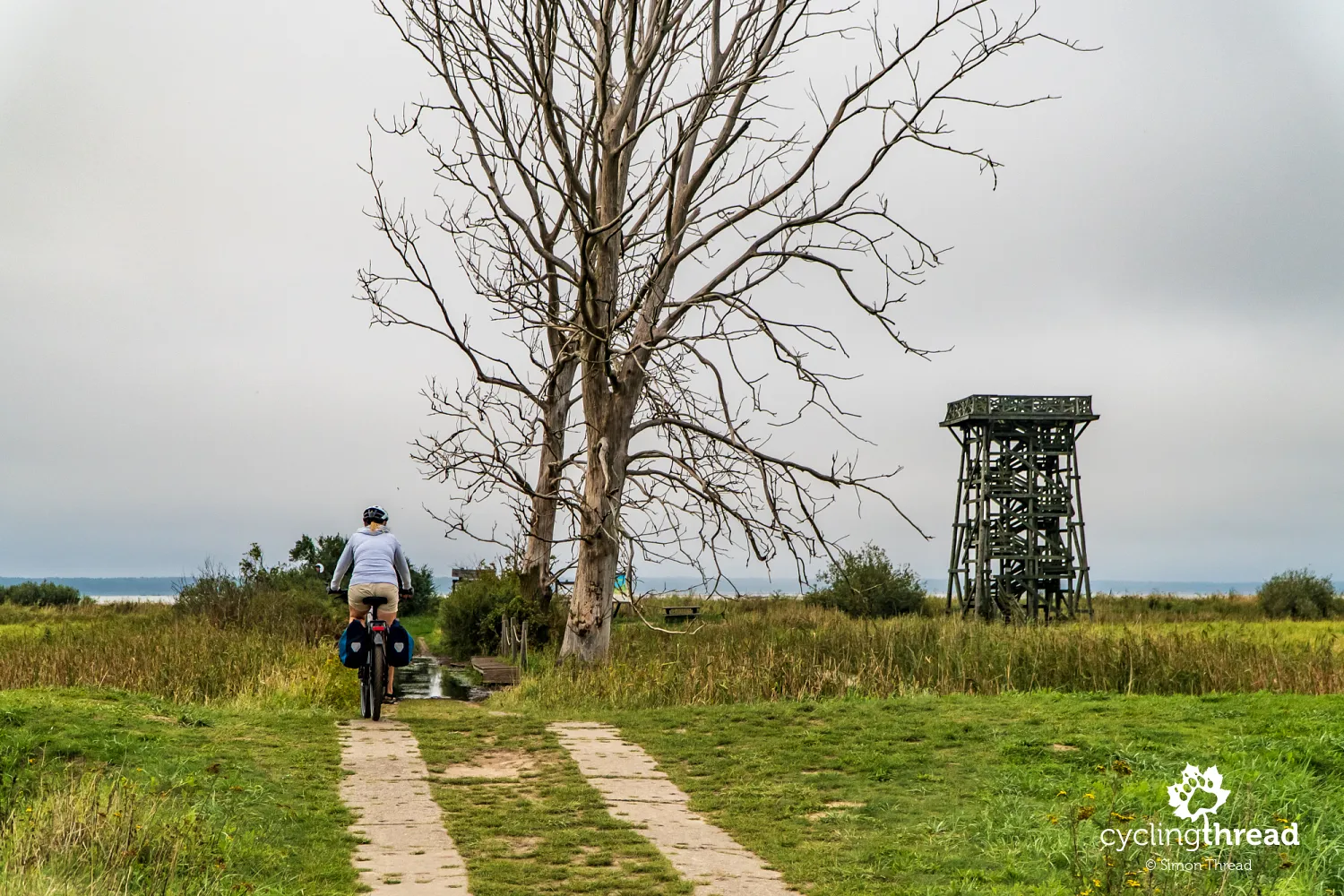
After spending the night in a fantastic guesthouse in Gardna Wielka (the breakfast was something else!), we kicked off the day by climbing another observation tower. This time, we were on the opposite shore of Lake Gardno. The tower here is lower and has a more modern structure than the one we saw the day before. In this spot, the long distance to the water's edge is taken up by a man-made polder, where we spotted a tractor working in the distance. At first glance, the neatly mowed landscape looks like just an ordinary meadow, not especially valuable. But this is still part of Słowiński National Park - specifically the Gardnieńskie Lęgi strict nature reserve. The mowing helps support the habitat for water and marsh birds, giving them space to forage and nest. Among the protected species found here are ruffs, sandpipers, and redshanks. Not far away in Smołdzino, you'll also find the park's headquarters and a nature museum, which is well worth a visit.
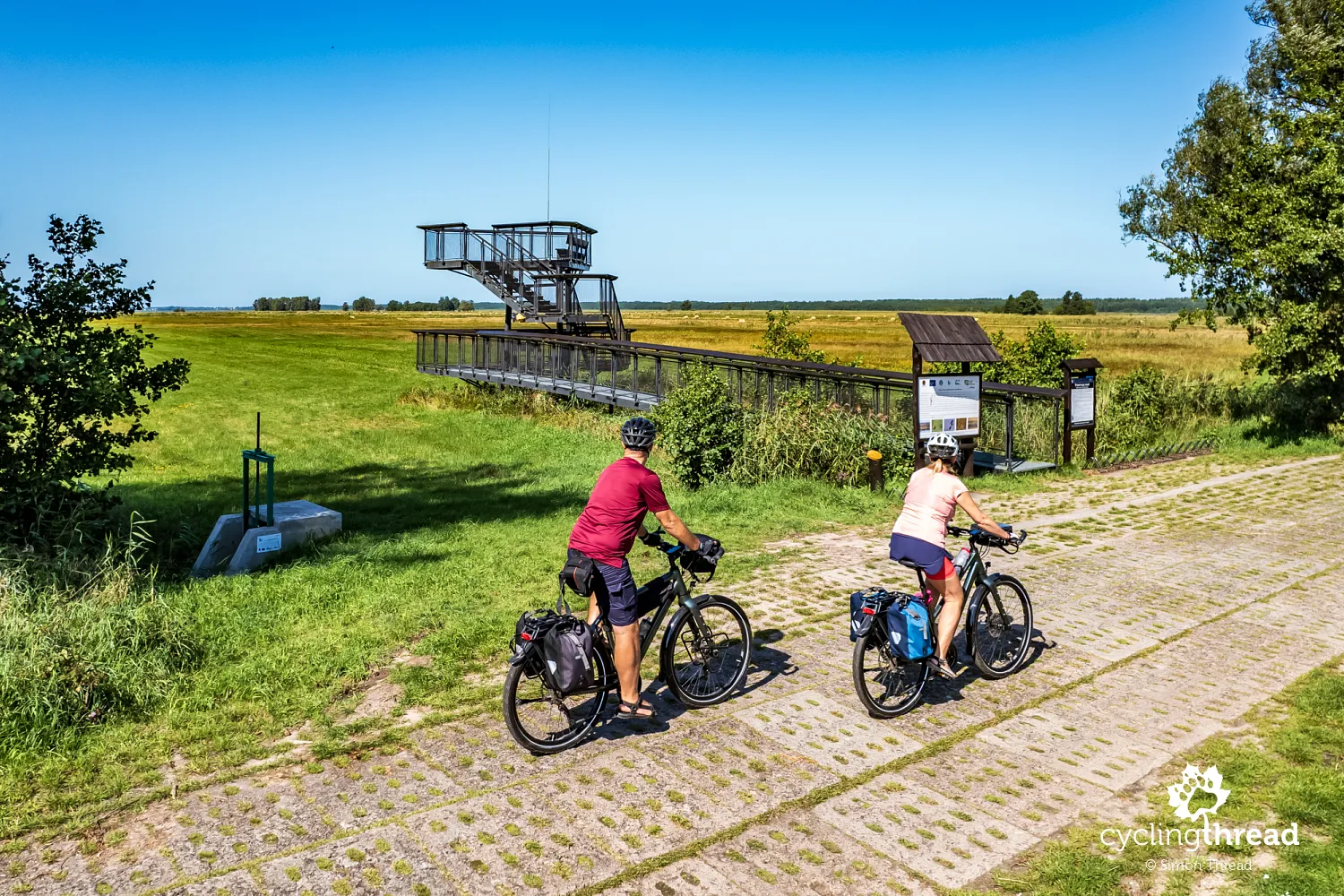
The legendary Kluki now off the EuroVelo 10 route
“Anyone who hasn't biked through Kluki hasn't really lived,” I once joked on a cycling forum. But it seems not everyone will get the chance. Just past Smołdzino, the route shifts again - first along the road, then onto a newly paved concrete section that makes a wide detour around the marshlands south of Kluki, where the old R10 route used to run. For years, cyclists would emerge from this stretch caked in mud, treating Kluki as a rite of passage. Some were thrilled by the challenge, others far less amused when faced with 3–4 kilometers of swampy track swarming with flies, horseflies, and mosquitoes. Over time, the wooden walkways became more of a hazard than a help, as the ground around them sank and the heavy bike traffic made riding onto them tricky. The new EuroVelo 10 now bypasses Kluki - the ride is smoother, no doubt, but it's also lost a bit of its thrill.
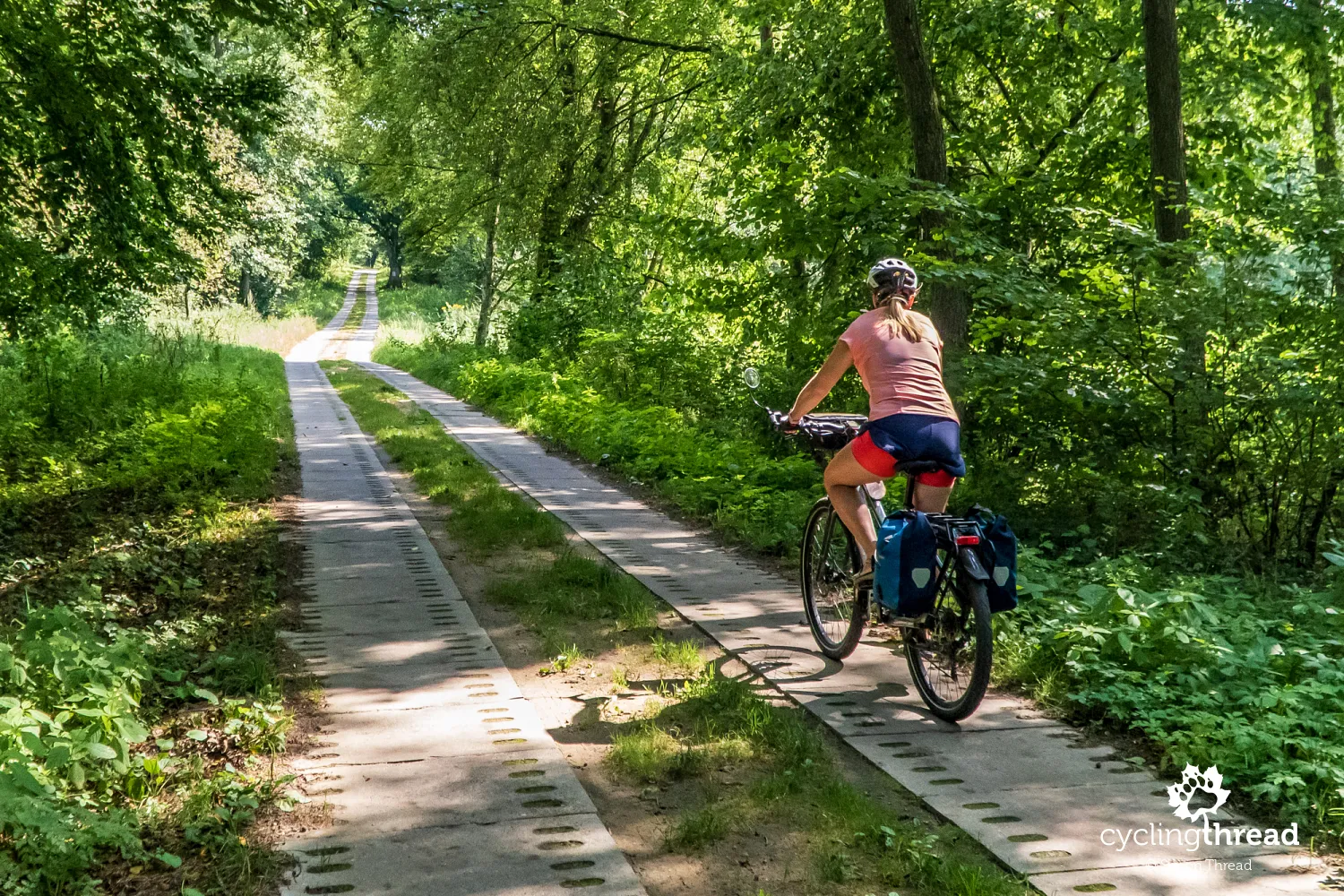
But mythical Kluki is more than just a muddy adventure. It's home to the Museum of the Słowińska Village - one of the most beautiful and interesting heritage sites on Poland's Baltic coast. The open-air museum offers a look into the culture of the Słowińcy, a small, vanishing ethnic group who still live in the area. Each year, visitors come to Kluki for the Black Wedding - a pre-war tradition where locals would dig up peat together in preparation for the winter. It would be a shame if cyclists stopped coming here, but visiting the museum while sticking to the main EuroVelo 10 route means a nearly 20-kilometer round-trip detour from Smołdzino.
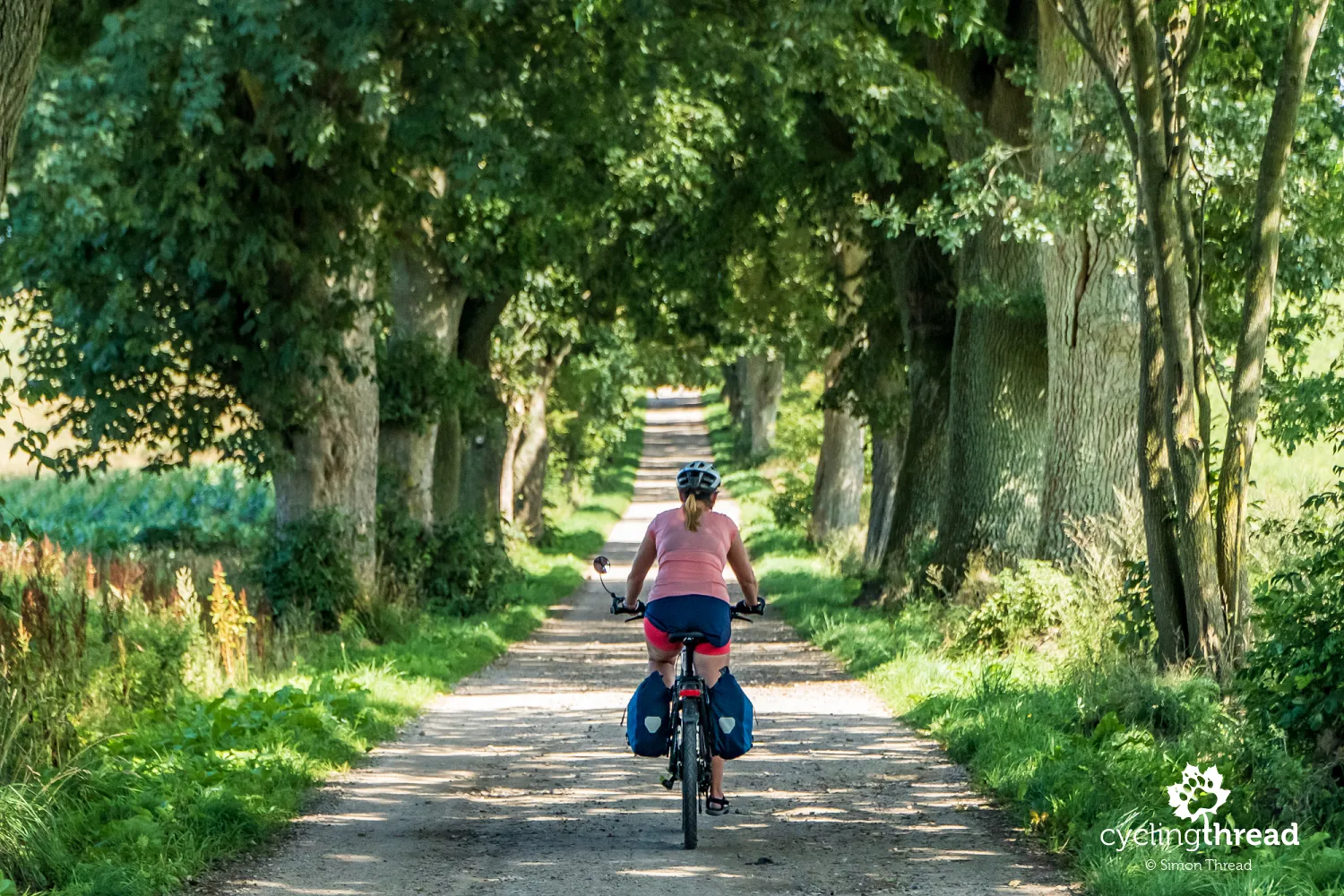
EuroVelo 10 brings opportunity to small towns
The new section of EuroVelo 10 through Wierzchocino and Główczyce is a pleasant one. It passes a lovely little forest pond called Śmierdzonko - a peaceful rest stop that could even serve as a camping spot. From there, it's just a short ride to Główczyce. And it's places like these that have the most to gain from being along a European cycling route. Why not open a cyclist-friendly restaurant here - the perfect place to refuel before tackling the forest stretch toward Żarnowska? For now, the village's main attraction is the ruined 19th-century manor once owned by the Puttkamer family, who ran the surrounding Kashubian estate for 500 years. As recently as the 1990s, you could still see the manor's wooden interior. In 2019, a new owner promised to restore the estate and turn it into a hotel with a surrounding park. Unfortunately, the manor burned down in 2020.

The dome of the Atlantic heath instead of Kluki
Past Główczyce, but before reaching Izbica, the paved route cuts across the Bagna Izbickie nature reserve. This reserve, part of which used to be crossed by the old R10, was established to protect a unique raised bog of the Baltic type - home to a mix of ecosystems, including forests, mosses, marshes, and heathlands. While riding the road, look out for an info board on the left. From there, a discreet path leads to a wooden viewing platform. It offers a stunning view of the raised dome of the heath and broad patches of Atlantic heathland filled with marsh heather - said to be the largest and most beautiful in Poland. Take a moment to read the board, too - it explains in simple terms how these bogs form and how their shapes evolve over time.
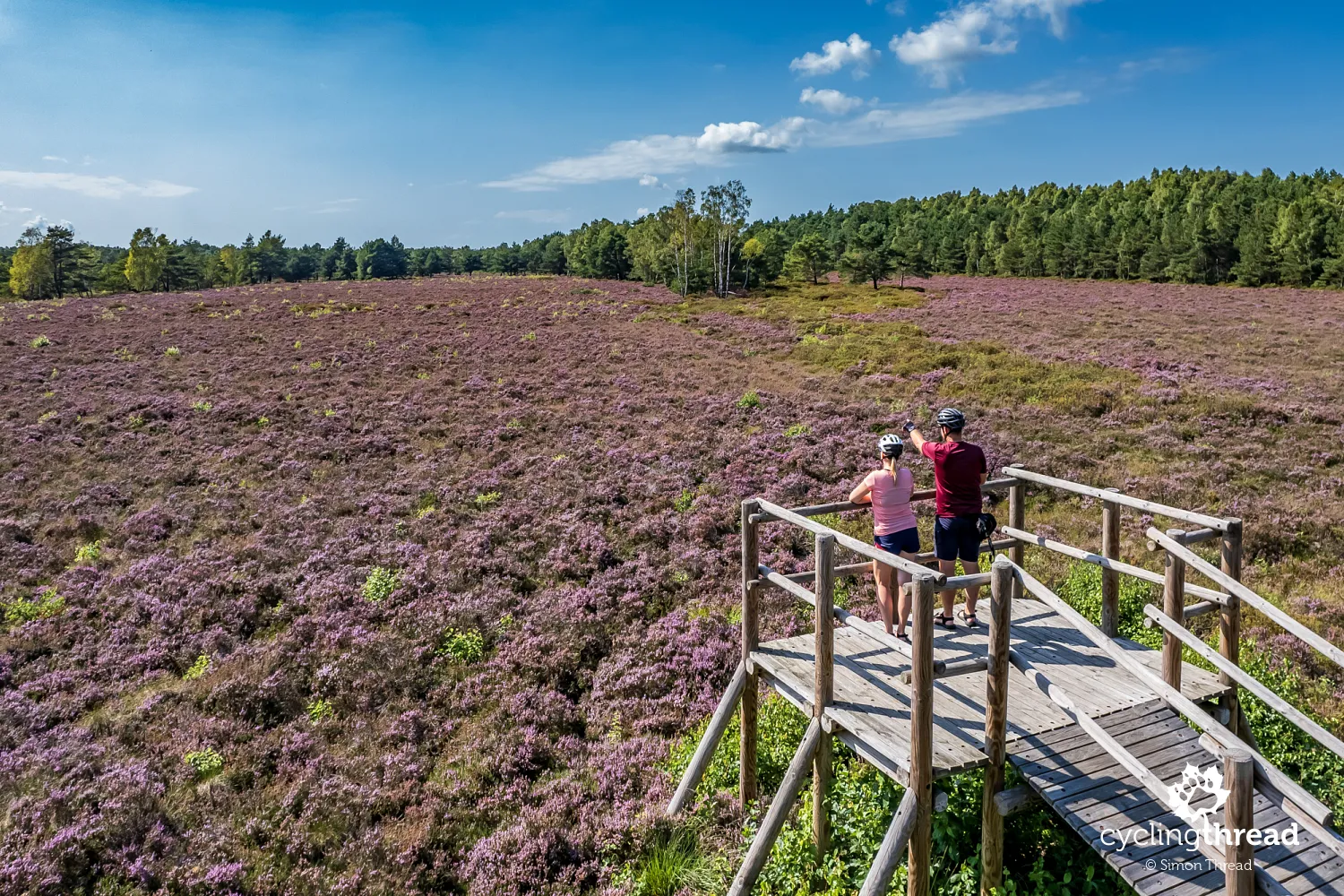
Viewing platform with a view of the dunes and Rowokół
Another stunning view of Słowiński National Park awaits those who venture to the observation platform at the mouth of the Łeba River, where it flows into Lake Łebsko. To get there, turn off the bridge over the Łeba River between Izbica and Gać onto a sandy, unpaved road along the flood embankment and ride about a kilometer east. A bit of extra effort will reward you with a panoramic view of the park, with Rowokół Hill on one side and the famous shifting dunes on the other - although both lie across the water, on the far side of Poland's third-largest lake. Few cyclists ever make it here, probably unaware it even exists. But if you're looking for the perfect spot to take a break, this one is truly special.
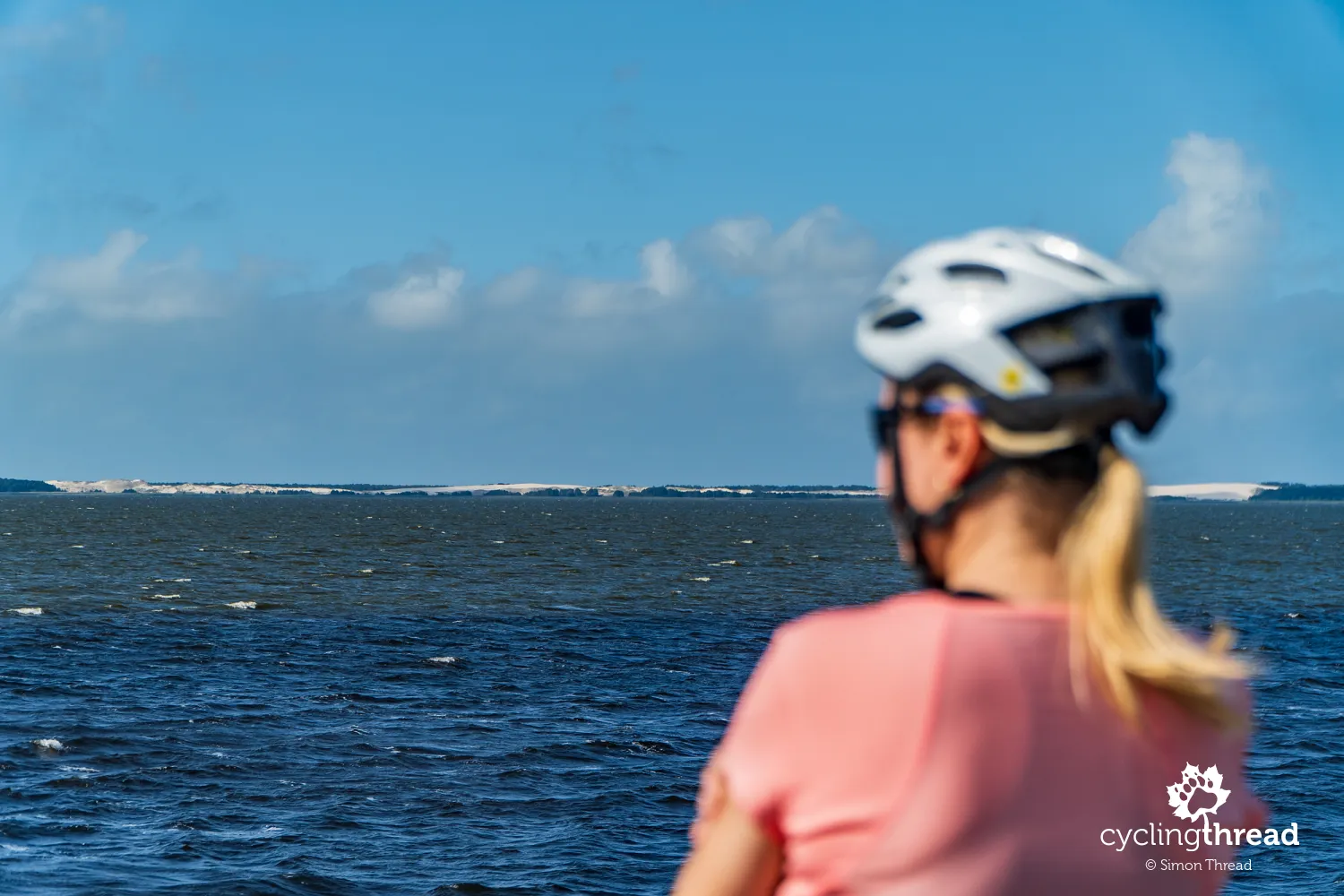
Five kilometers of sandy struggle
Just past the village of Gać begins what many consider the weakest link of the Baltic Sea cycling route - a roughly 5-kilometer section that often shows up in cyclist trip reports as the worst stretch of the journey along the Baltic coast. In summer, it's filled with sandy patches that even our Koga WorldTravellers, with their over-two-inch tires, couldn't handle. Here, you'll need to be ready to push your bike - sometimes for a few dozen meters, sometimes for a few hundred. On a hot day, this part can really wear you down, so it's worth factoring in when planning your stage. On the bright side, it's only 5 kilometers, not 50 - a good mindset to keep as you trudge through the sandbox before Żarnowska. Luckily, this won't last forever - Słowiński National Park, which manages this area, plans to improve the section either next year or the year after.
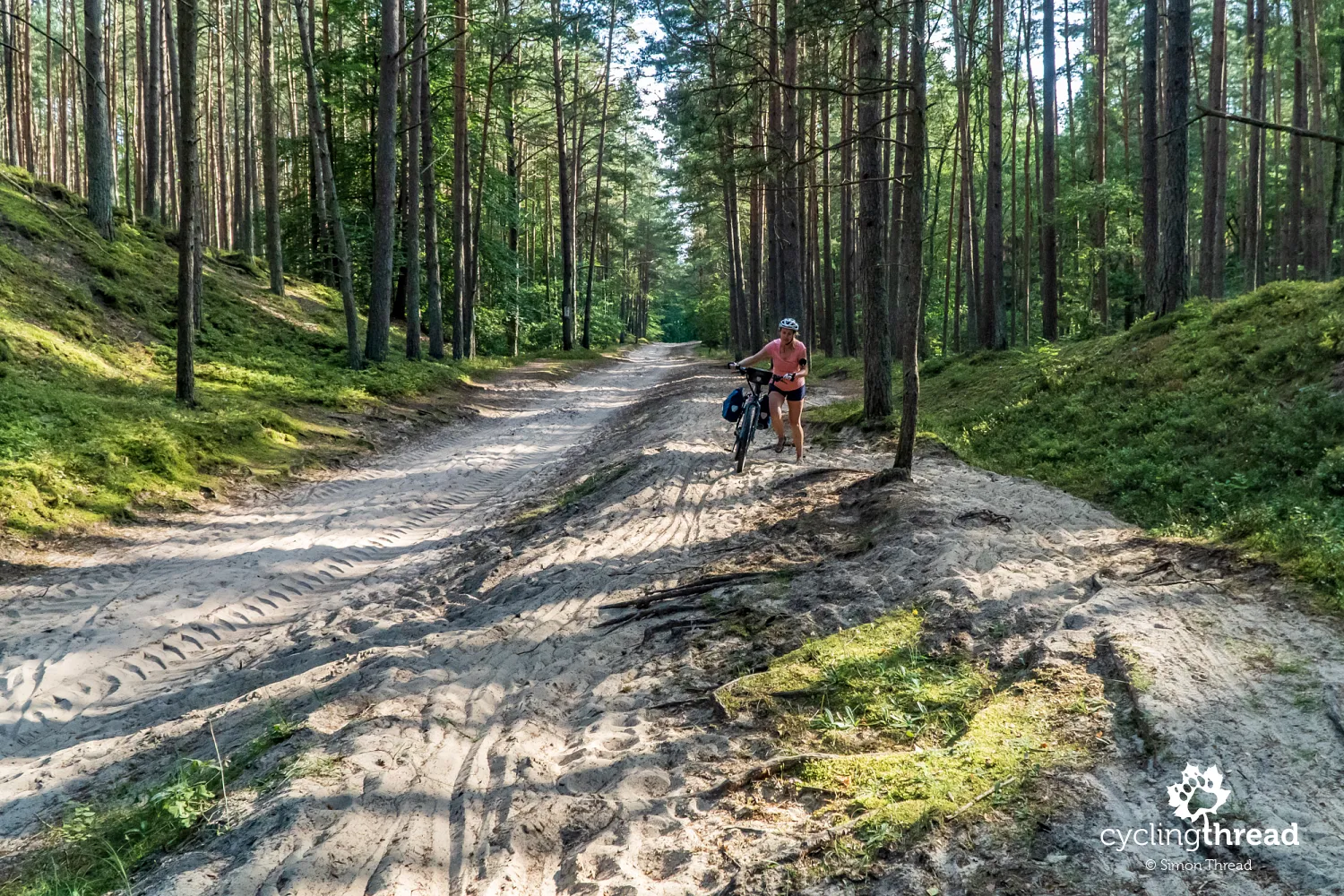
Baltic Sea Fishing Museum in Łeba
Łeba is one of the most well-known holiday destinations on the Polish coast, and that popularity brings crowds - and with them, a flood of seasonal souvenir stands. Pushy vendors and low-quality merchandise that only swap out the town name can dull the charm of coastal towns. Thankfully, some things by the sea remain authentic - like the ports, fishing traditions, and the bravery of fishermen, which you can still witness in Łeba. A new museum is currently being built in town, dedicated to these traditions: the Museum of Underwater Archaeology and Baltic Sea Fishing. Its unique building is rising along the Łeba River, across from the marina. Hopefully, this new addition will give Łeba the kind of modern, meaningful museum that will become a highlight for summer travelers. In the meantime, consider a short detour to the eastern breakwater while riding EuroVelo 10.
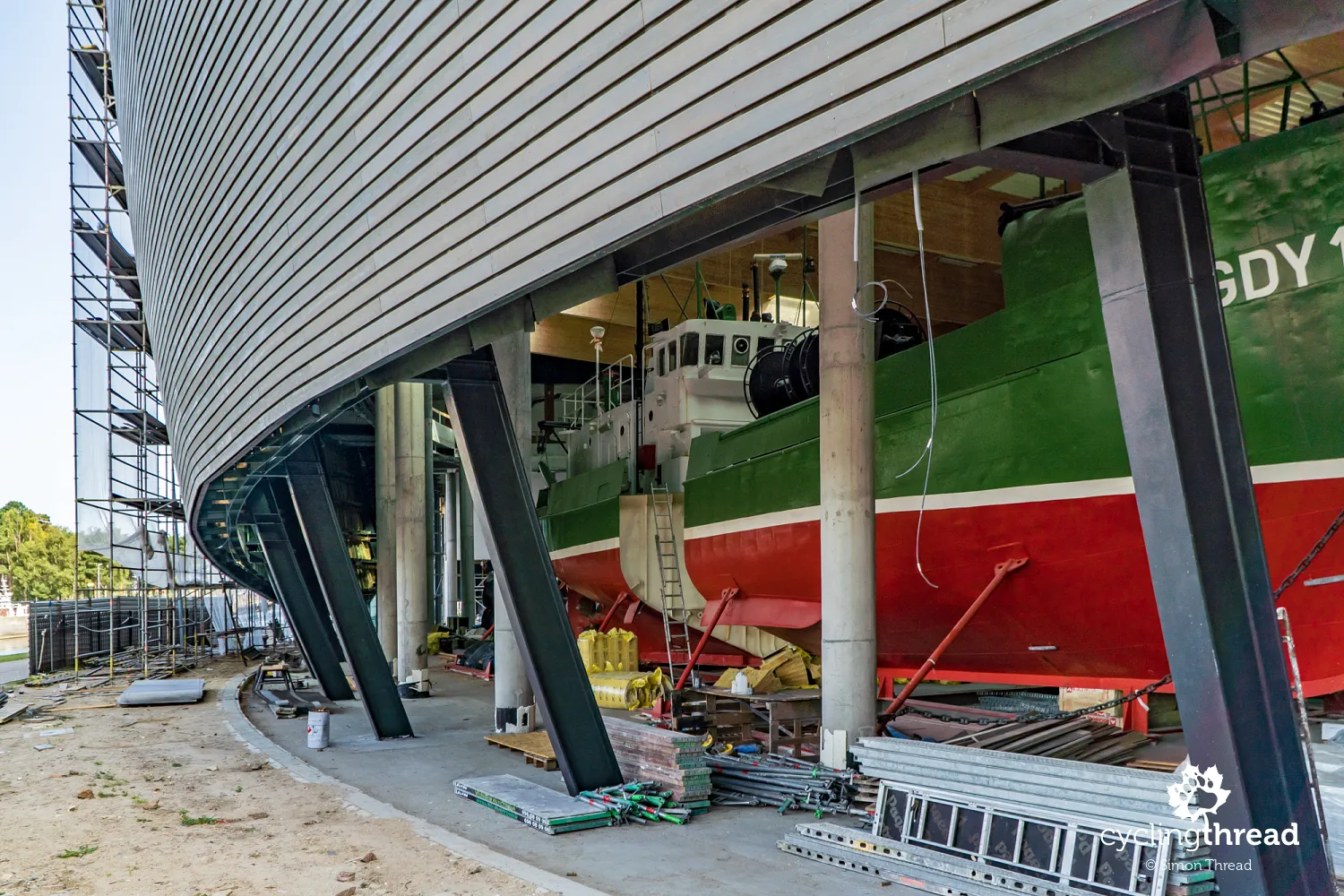
Following a new section toward Osetnik
The wide forest path that now skirts Lake Sarbsko from the south is another recent update to the Baltic Sea cycling route. The old R10 used to run along the northern shore of the lake, cutting across the Sarbska Spit - a route full of stunning nature and views, but also tough challenges. That stretch between the Stilo lighthouse and Łeba was known for its deep sand and roots, giving it a very off-road feel. Now, the route from Łeba takes you along a forest gravel path starting behind Nowęcin, followed by a mix of public and forest roads - still with the occasional short sandy patch. As with the new Kluki detour, it's definitely more comfortable now, though less exciting.
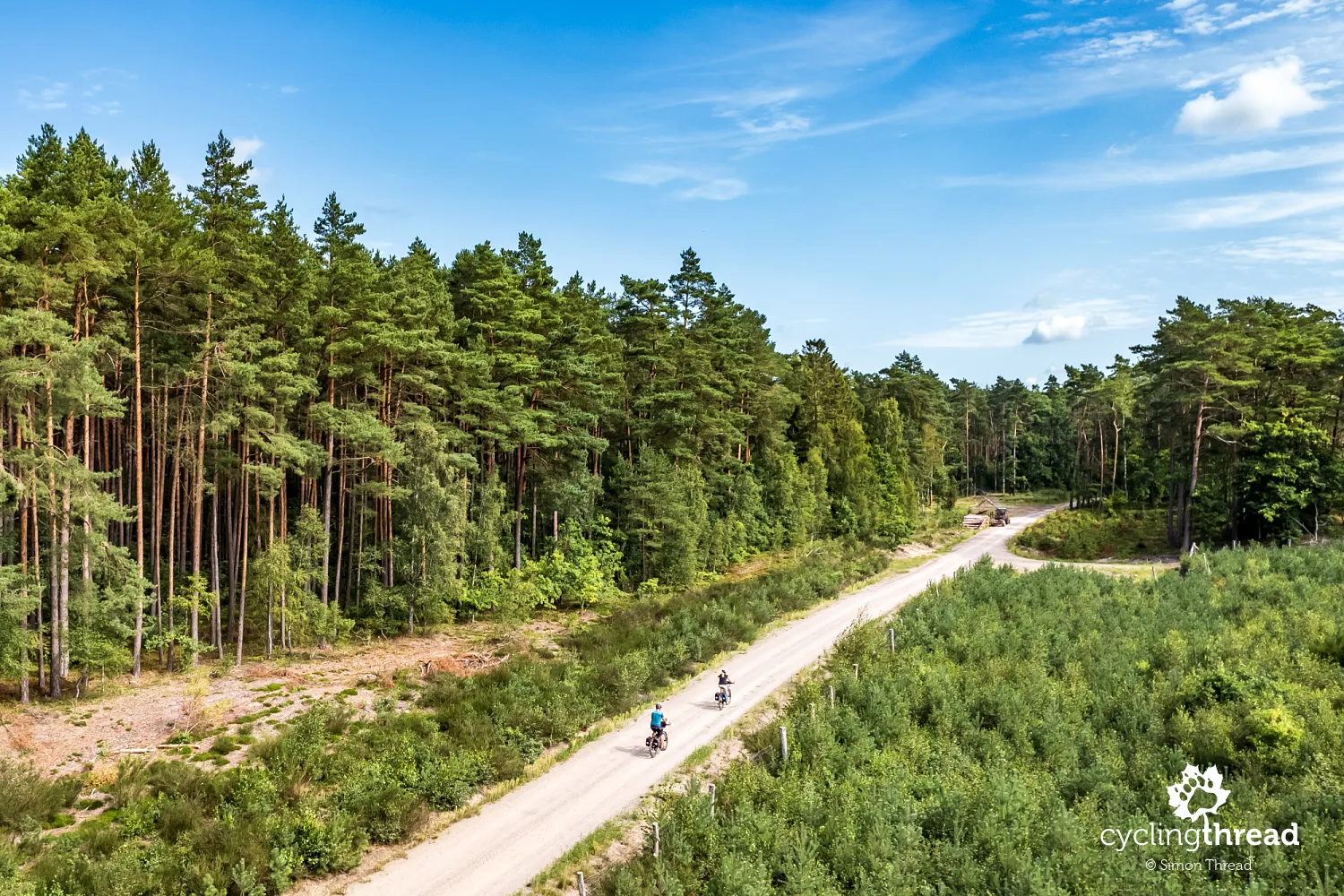
Sasino manor and Stilo lighthouse
Soon after, EuroVelo 10 joins a brand-new bike path that, as of this year, connects Sasino with Osetnik. It's a pleasant descent, and about halfway through, it's worth turning right for just a few hundred meters to see one of the most beautiful sites along the northern Kashubian manor and palace route - the manor in Sasino. Built in the 19th century and surrounded by what's now a landscaped park, its original layout can still be seen today. Unfortunately, the manor is currently closed to the public, though you can see it clearly behind the park fence. It's been out of use for a few years, but in 2025, it's set to reopen as a new hotel. Just a short distance farther, you'll spot the striking and unique Stilo lighthouse - a must-see for anyone cycling the Polish coast in search of lighthouses.
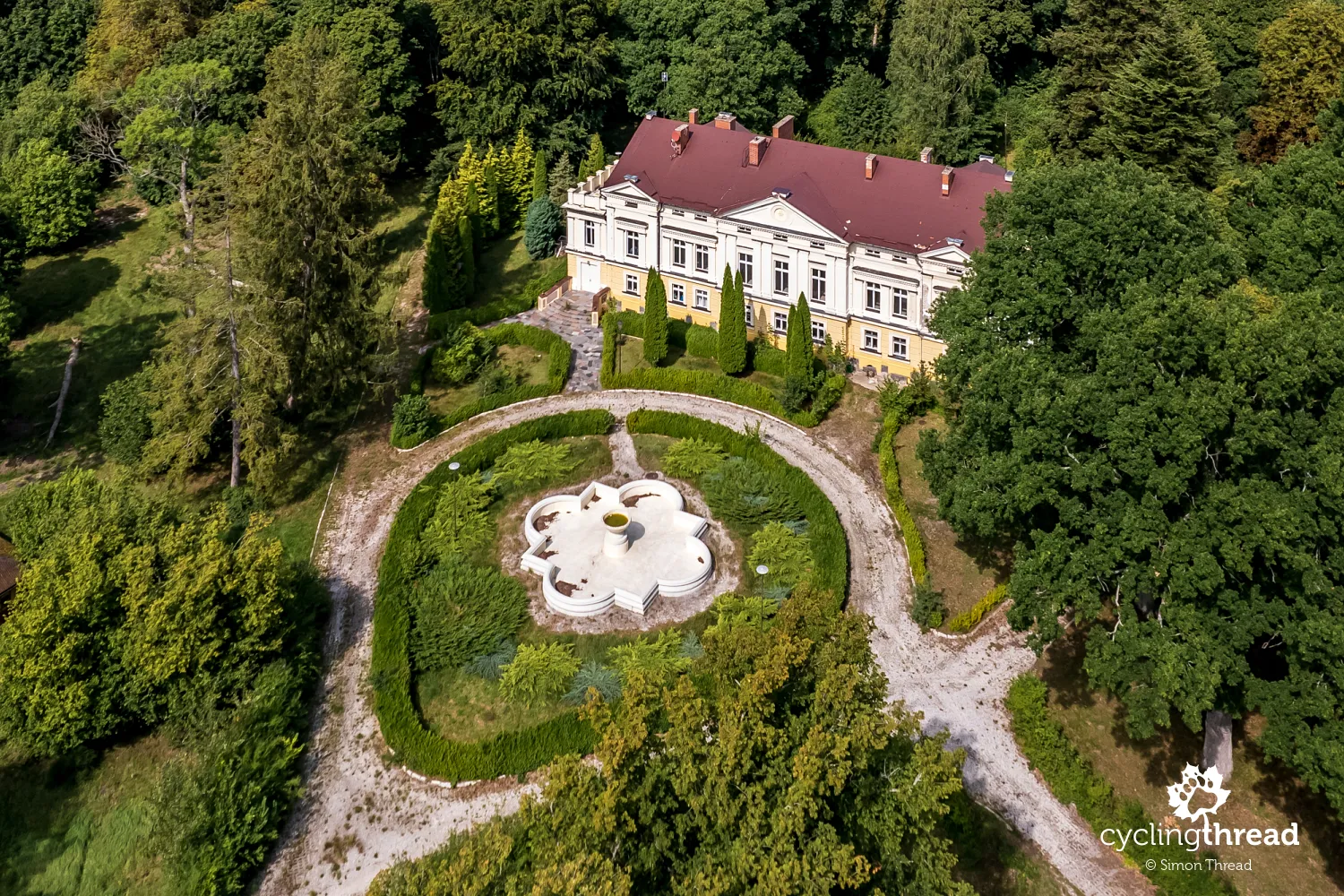
Osetnik is a great place to take a break before heading out on foot to visit the Stilo lighthouse. This is one of the few Polish lighthouses located far from any towns or buildings - a fact that becomes especially clear in aerial photos. Stilo is also one of only two lighthouses in Poland - and just three in the world - built from cast iron plates bolted together. Since its construction in the early 20th century, it has kept its original paint job, which reflects the colors of the German Empire, under whose rule it was built. Nearby are the ruins of a “nautophone,” a foghorn station built alongside the lighthouse but dismantled after World War II. Parts of it were used to construct the lighthouse in Jastarnia, which still stands today and shares a similar design with Stilo.
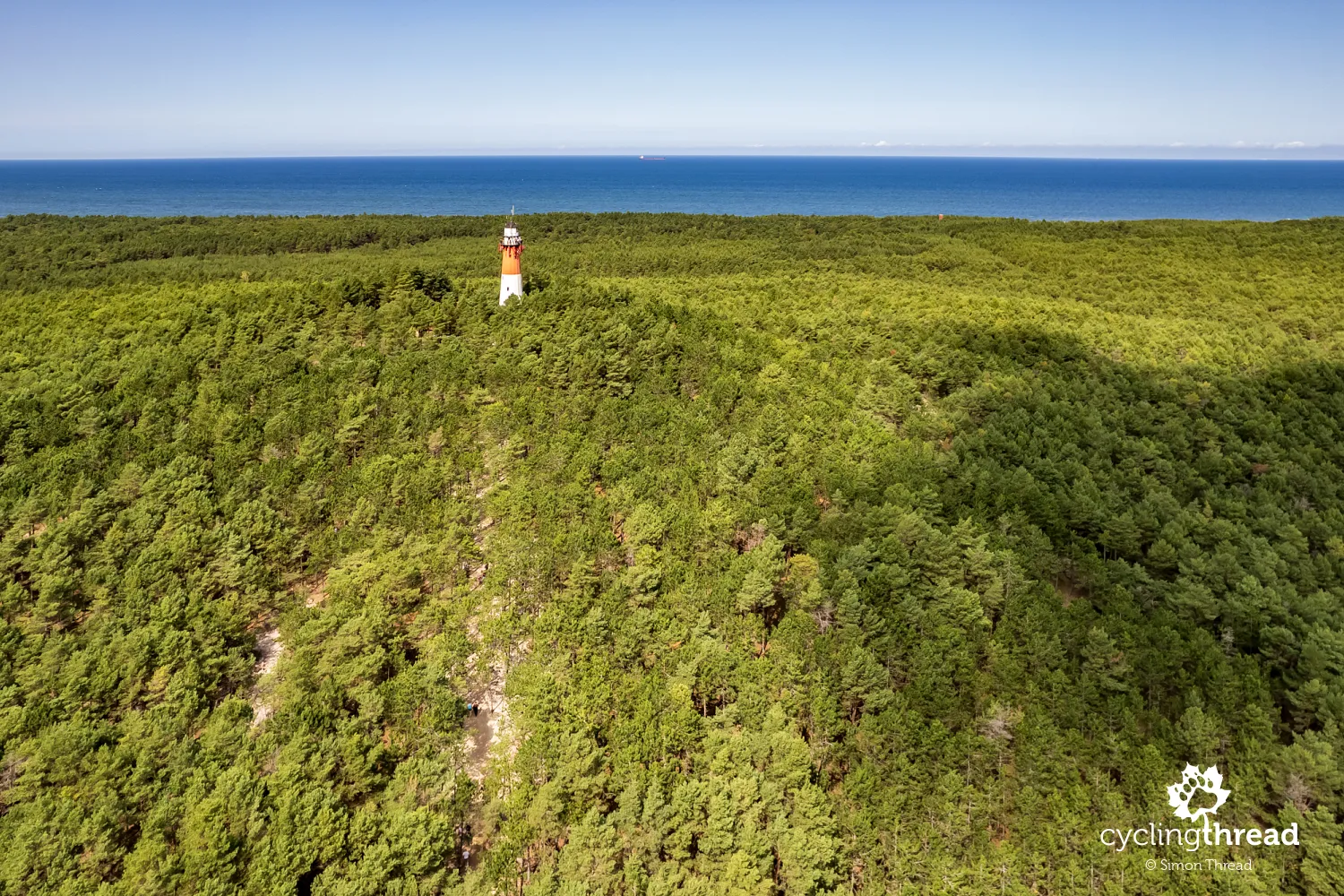
One of the most beautiful sections of EuroVelo 10
Just past Osetnik begins a truly special stretch of the EuroVelo 10 cycling route - widely considered by many riders to be one of the most beautiful parts of the coastal journey. The route winds gently through a seaside pine forest on a firm path paved with dark material. Many cyclists turn off here toward one of the most stunning beaches on the Baltic coast - and the wild parking spot packed with dozens of bikes near the beach entrance says it all. We did the same - parked our bikes, grabbed our handlebar bags with the most precious gear, and sat down for a short rest on the beach. Even in the peak season, with perfect weather, the beach was nearly empty. A single colorful windbreak stood at the center like a flag marking a quiet, hidden paradise. What gives this stretch its special charm is the knowledge that it may not be around much longer. These could be the final years - or even months - when it's still possible to ride here. And when this forest still exists...
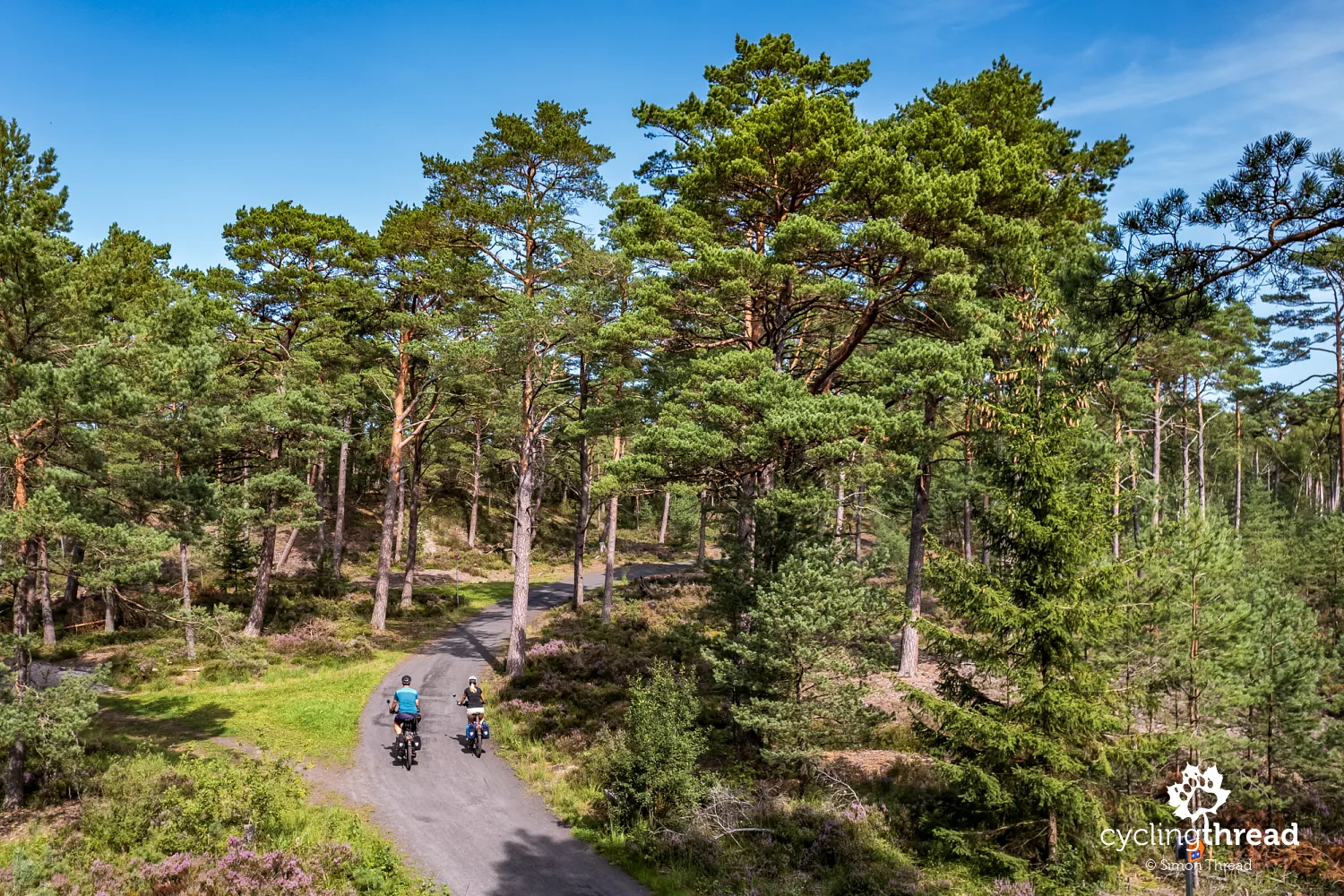
A nuclear power plant on the cycling route
In 2026, construction is set to begin in the forest between Osetnik and Kopalino on Poland's first nuclear power plant, called Lubiatowo-Kopalino after its expected location. But before the main project can break ground, site preparations will be needed - including deforestation. Archaeological and clearing work was originally scheduled for 2023 but, due to the election year, will likely start in 2024. So it's only a matter of time before this scenic section of the route is fenced off, and tourists will have to follow a still-undetermined detour. While most Poles are not opposed to the idea of nuclear power - and some European routes, like the one along the Loire river, pass by nuclear plants - it's still hard not to feel disappointed that one of the most beautiful stretches of the Polish Baltic coast was chosen as the site for such a massive development.
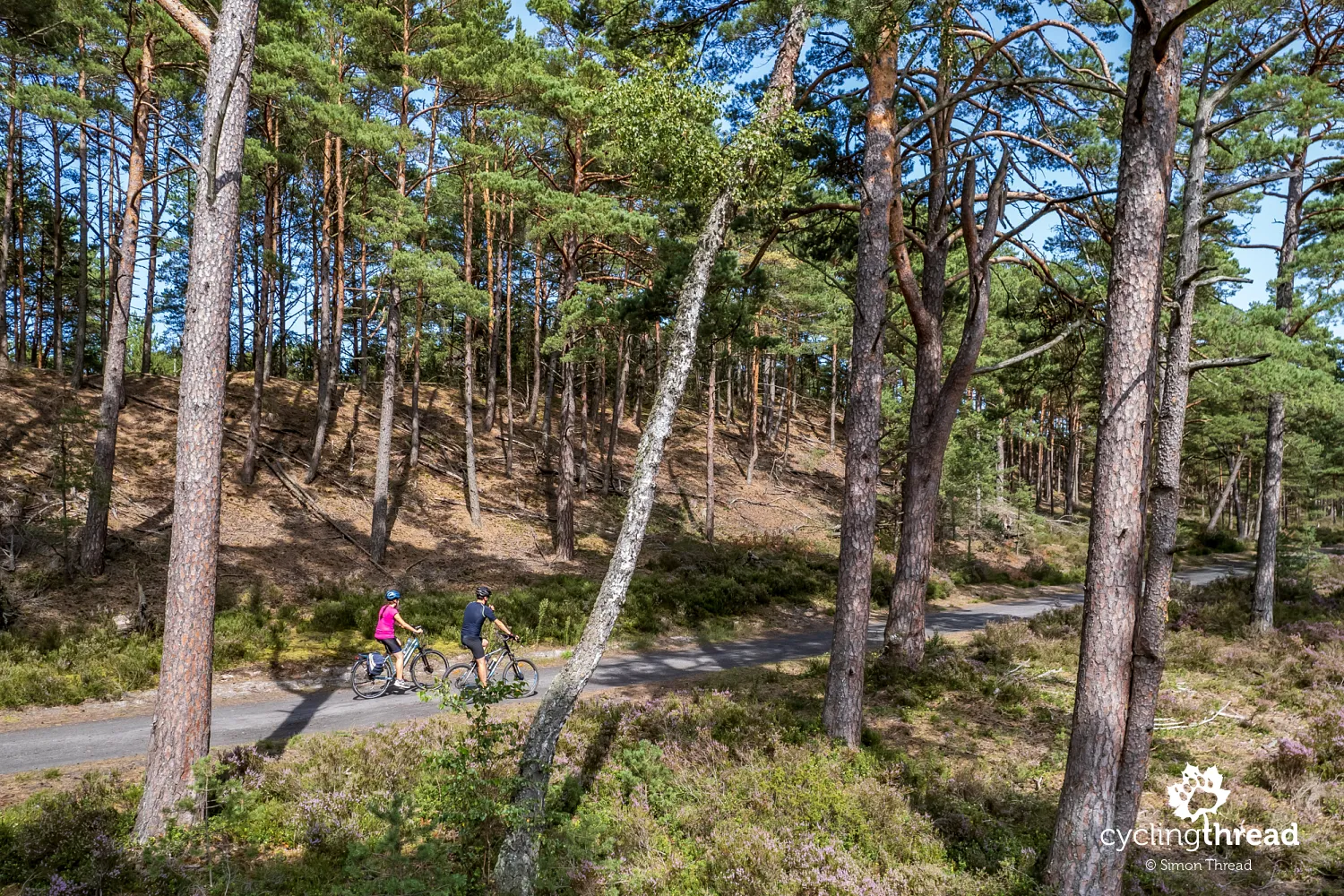
Plenty of good, wide, firm surfaces along the route
As the Baltic Sea route continues, it takes you through forested landscapes between Lubiatowo, Białogóra and Dębki. The surface changes several times, but remains firm, wide, and pleasant - mostly gravel or hard-packed forest paths. Despite common claims that the Pomorskie section of EuroVelo 10 is much rougher than the Velo Baltica in West Pomerania, the difference isn't as dramatic as it may seem. It's true that while riding Velo Baltica recently I didn't come across a single sandy surprise. Meanwhile, the Pomorskie stretch had a few - notably between Gać and Żarnowska, and in the forest past Ulinia. The worst part might still be the concrete slabs by Lake Gardno in Słowiński National Park. But the good news is that nearly all of these weak spots are set to be upgraded in the next phase of the Pomeranian Cycling Routes project. Apart from those exceptions, the rest of EuroVelo 10 in this region offers solid surfaces - hard-packed, gravel, or forest paths, and in many places even better: asphalt or concrete.
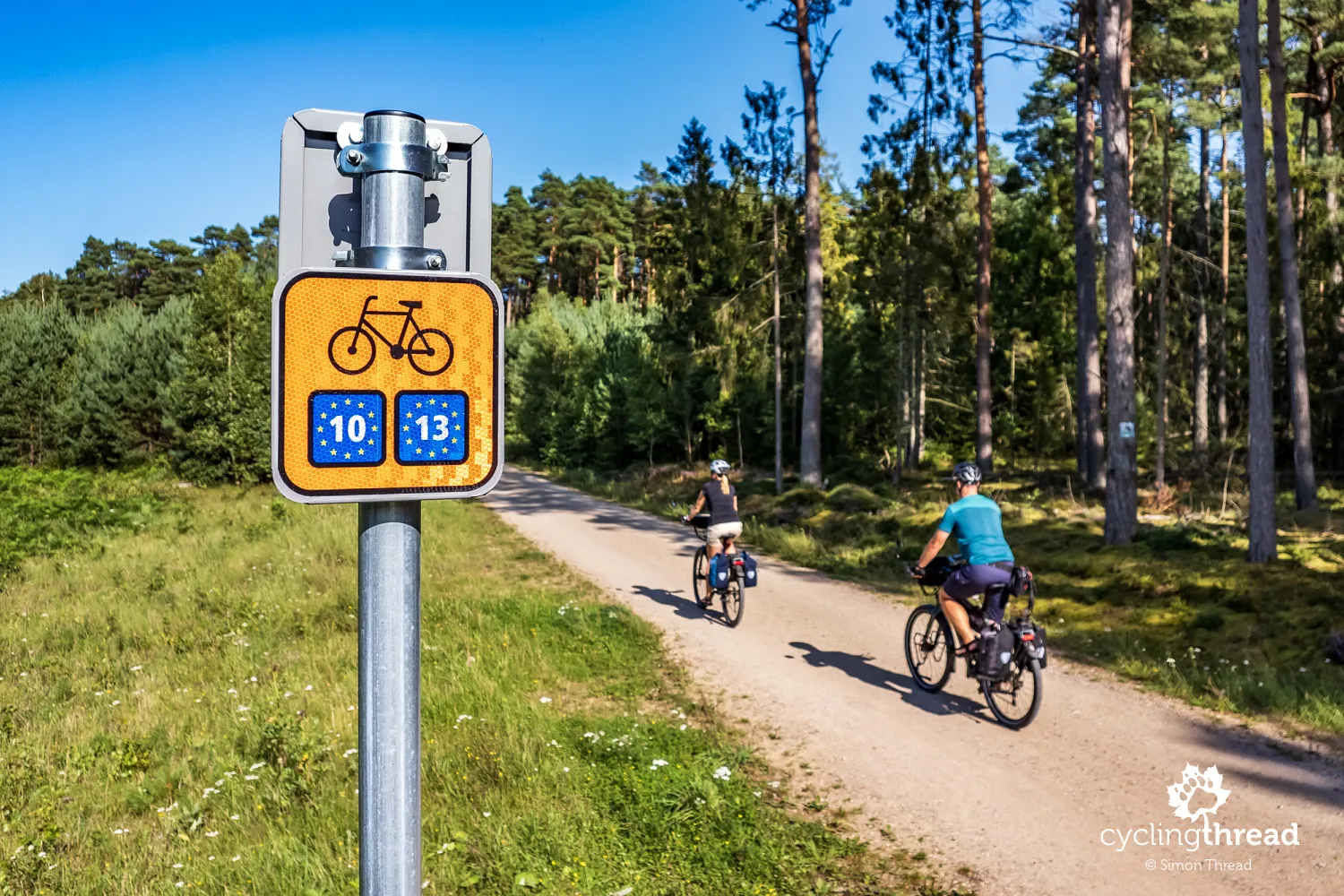
The best rail-trail in the region
After a long forest stretch, squeezing through the busy village of Dębki, and riding through the surprisingly charming Karwieńskie Błoto Drugie - where many homes reflect traditional Słowińska architecture - we arrive at the best former-railway bike path in the Pomorskie region. Trains stopped running on line 263 from Krokowa to Swarzewo in 1991, and the tracks were dismantled in 2005. Soon after, one of the most enjoyable rail-trails in Europe took its place. For nearly 20 kilometers, the path gently climbs up the Żarnowiecka Upland and then rolls peacefully back down. The landscapes along this section of EuroVelo 10 are beautifully uninterrupted - only a few small Kashubian villages like Kłanino, Starzyński Dwór and Łebcz dot the route. It's quiet, peaceful, and green - exactly how I imagine a perfect rail-trail.
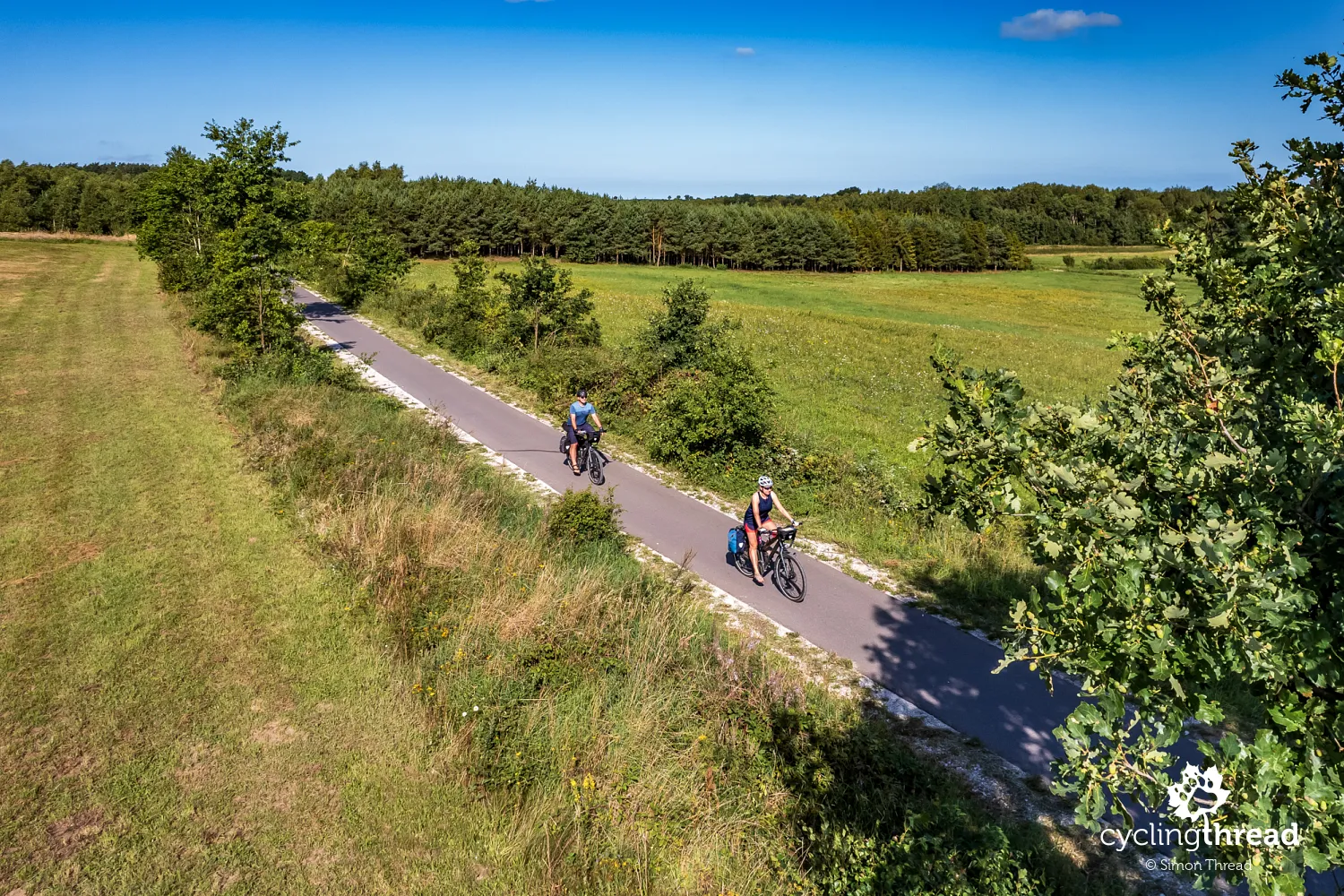
Kłanino - a stunning manor and an armor museum
Among the villages that once had stations on the old line 263 is Kłanino, home to two spots that make it one of the most interesting places along the entire EuroVelo 10 route. First is another of the noble manor houses of northern Kashubia - an eclectic residence once owned by the von Grass family before the war. It remains in excellent condition thanks to its current owner, who is deeply invested in preserving the region's history, and also thanks to its new role - Pałac Kłanino is now a hotel that can be booked through Booking.com. Be sure to step inside: the interior includes a beautifully restored staircase, with elements that the current owner tracked down in Gdańsk to recreate the original decor. The previous furnishings, brought to Kłanino by the von Grass family in the late 19th or early 20th century, had once belonged to another townhouse in Gdańsk - and were returned to the city after the war. Today, they're part of the display in the Nowy Dom Ławy on Długi Targ.
Historic staircase inside the manor in Kłanino
The second reason to stop in Kłanino is the Armor Museum - a private collection born from the manor owner's passion for military history. The museum opened in 2022 in the former farm buildings next to the manor. Inside, you'll find a collection of military vehicles, including tanks and armored personnel carriers from World War II. One of the standout exhibits is a rare German Panther - the only one of its kind in Poland. All of the vehicles here are fully operational, with original engines, and regularly appear in parades, reenactments, and military-themed events. The museum also features multimedia displays that make the experience even more engaging.
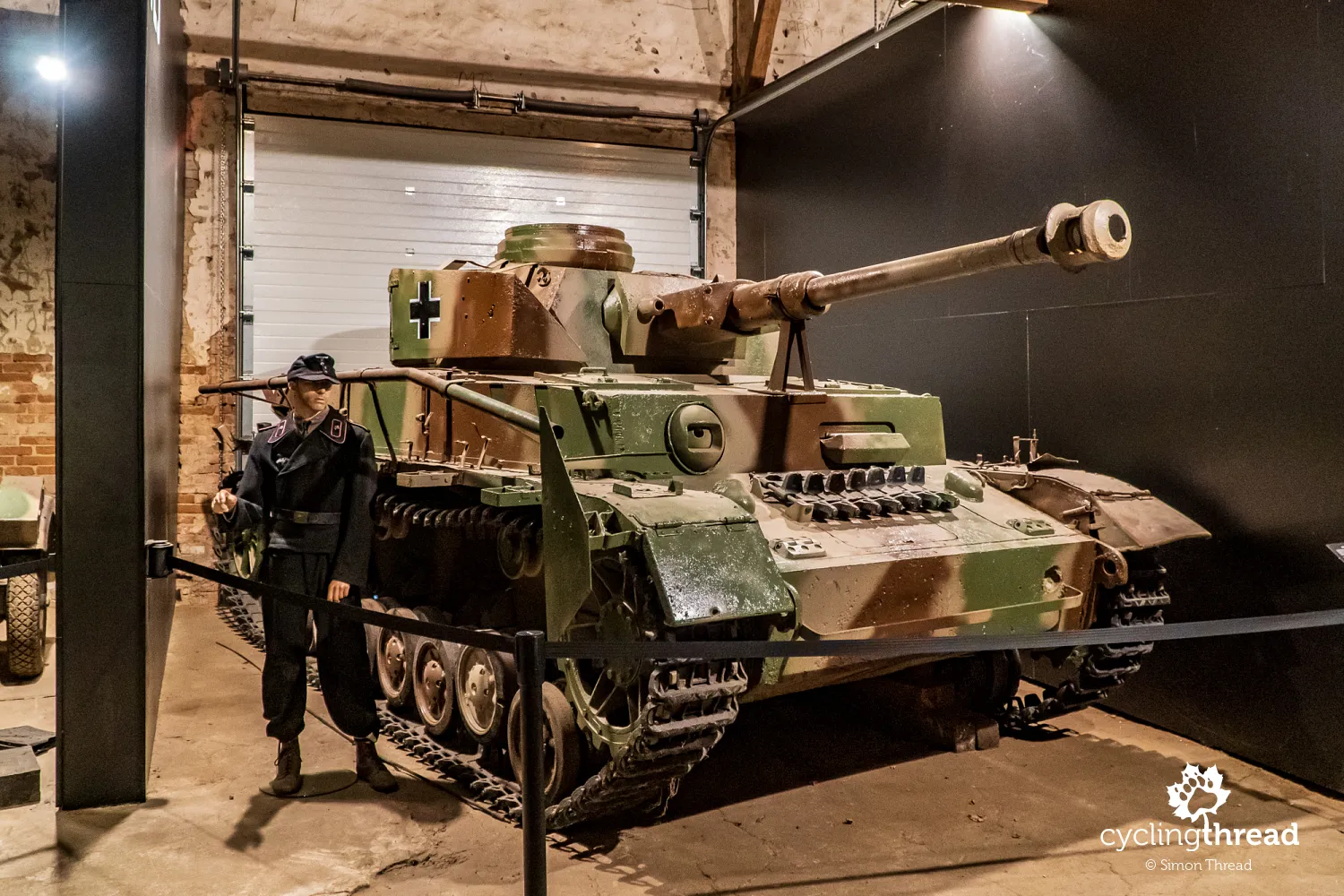
Along the rail-trail section from Krokowa to Swarzewo, the many tidy rest stops really stand out - bike shelters, tables, benches, and even toilets! There are dozens of such spots along the entire EuroVelo 10 route in Pomorskie, all built in a consistent, eco-friendly style with wooden structures that blend into the natural surroundings. The semi-enclosed design offers wind protection from three sides and - whether by chance or design - the western side, from where the wind blows most often on the Baltic coast, always seems to be covered. Unfortunately, we unknowingly missed some of the largest and nicest rest areas (except for the one in Radoszewo), either because they're hidden from the path - like in Poddąbie - or located off the main route where few cyclists venture, such as in Łeba, where the rest area lies well outside town, far from the natural flow of bike traffic.
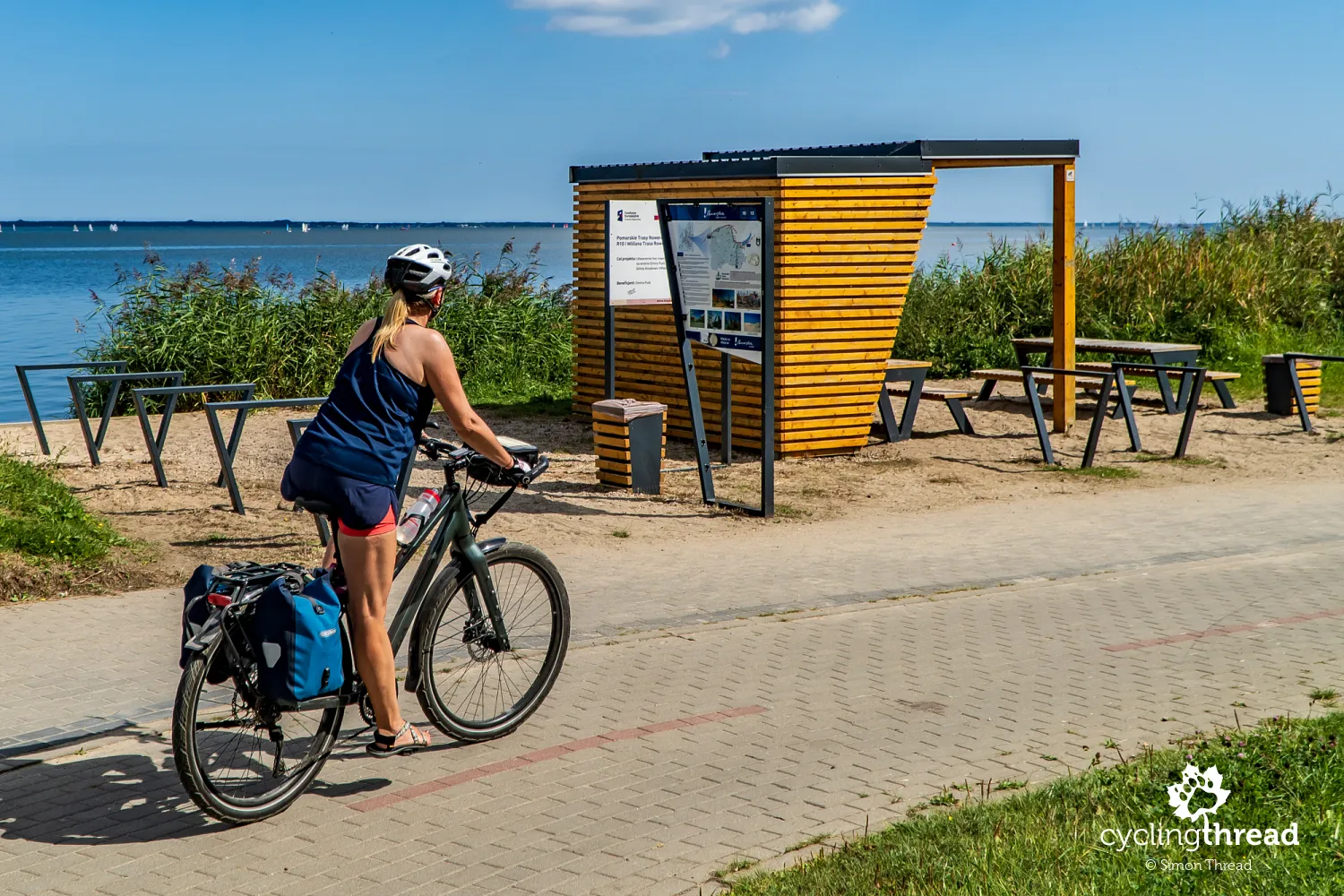
A welcoming town square in Puck
From the end of the old railway path, it's just a short ride to Puck. This coastal town has managed to preserve its charm and avoid the overwhelm of mass tourism. Its town square, marina, and harbor district give off that fresh seaside vibe year-round - even though Puck technically doesn't sit right on the open Baltic Sea. During every visit, we make a point of pausing in the small, cozy town square, which always strikes me as surprisingly quiet. Perhaps it loses out to the large marina and the beaches on the Bay of Puck. One local favorite is the Maszoperia fish restaurant, with one entrance right off the bike path and another near the church. Puck also offers one of the few bike paths along the route with scenic views of the “sea” - in this case, the Bay of Puck.
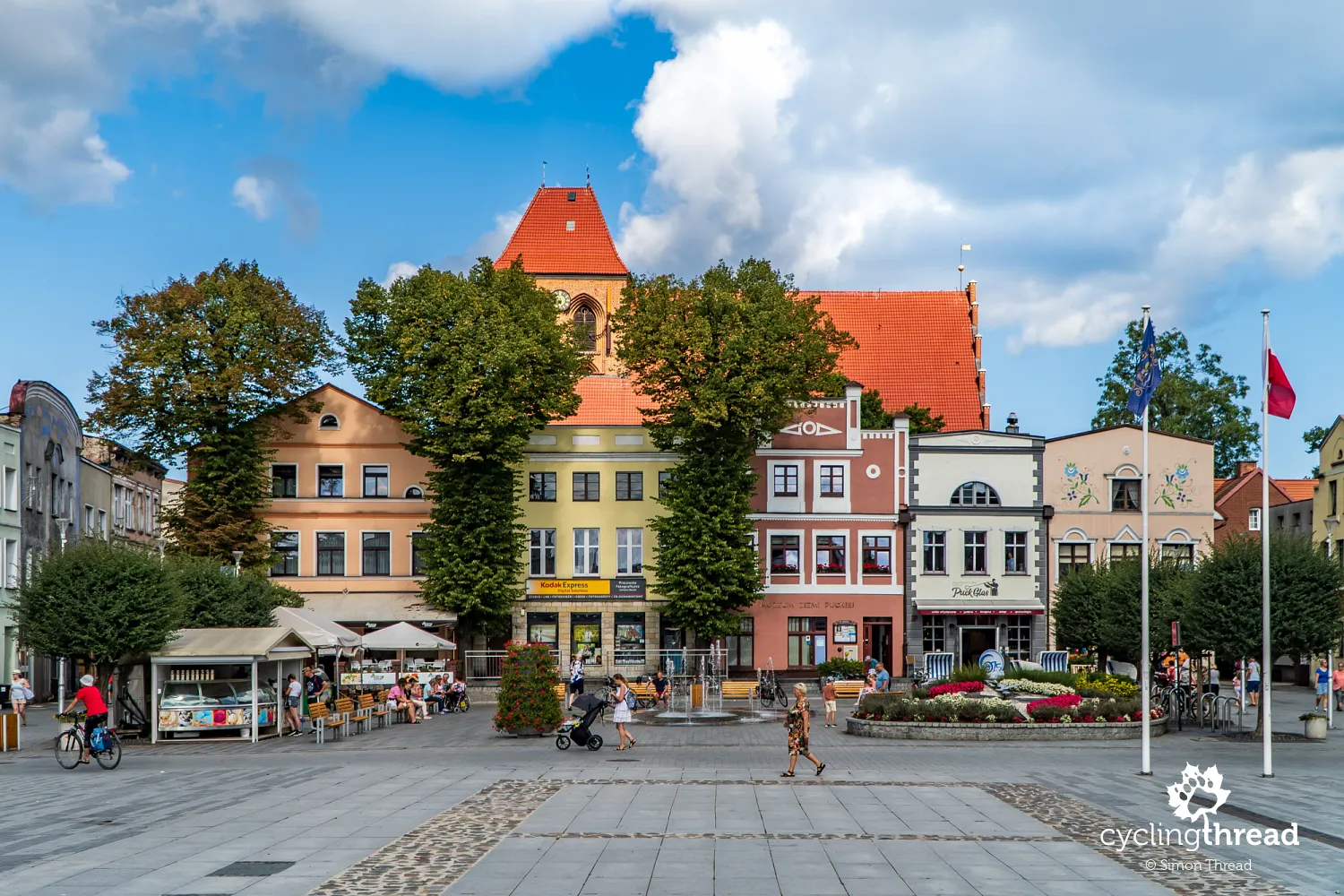
Seal Hunter Settlement and the Jan III Sobieski Palace
A reconstructed timber-frame hut along the route signals you're approaching the next points of interest. Welcome to Rzucewo - home to the Seal Hunter Settlement and a picturesque neo-Gothic palace. The cultural park of the Seal Hunter Settlement sits right on the Bay of Puck and features reconstructions of structures discovered during archaeological digs that began as far back as the 1930s. The findings uncovered evidence of settlements from the 5th century BCE, valuable enough to lend their name to the “Rzucewo culture.” This is definitely a top stop for archaeology enthusiasts.
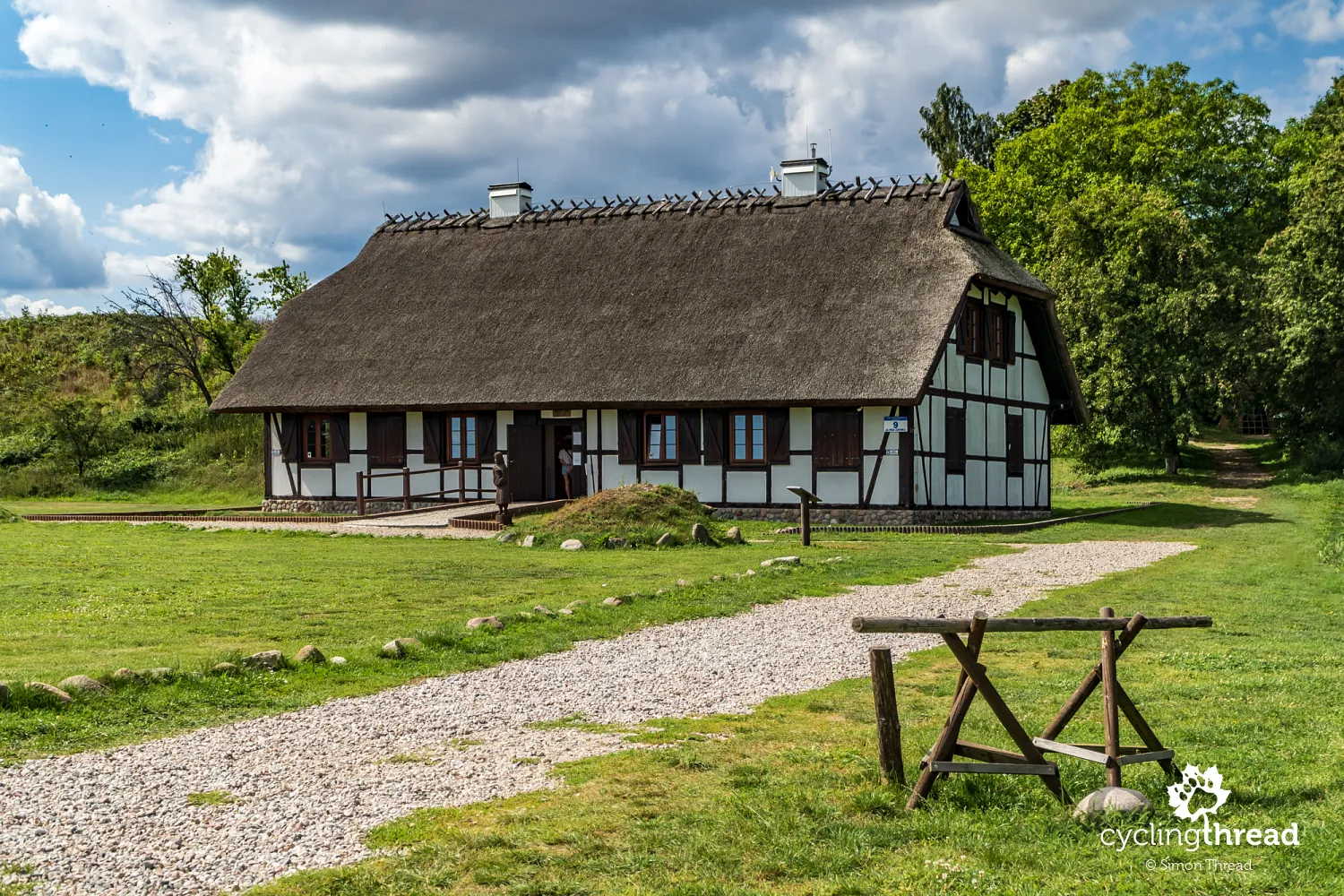
Just a few hundred meters away, the palace in Rzucewo was built between 1840 and 1845, during the time the estate was owned by the Keyserlingk and Below families. Previously, the land had passed through the hands of several prominent Kashubian families - the Wejhers, Sobieskis, and Przebendowskis. The residence was built in the style of late English Gothic and still holds undeniable charm - today it's a popular spot for private events, especially among locals from the Tricity area. Don't miss the alley that begins in front of the palace - about 300 monumental trees line the path, shading the EuroVelo 10 route as it continues toward Osłonino. The awful surface that used to make this stretch infamous is now a thing of the past.
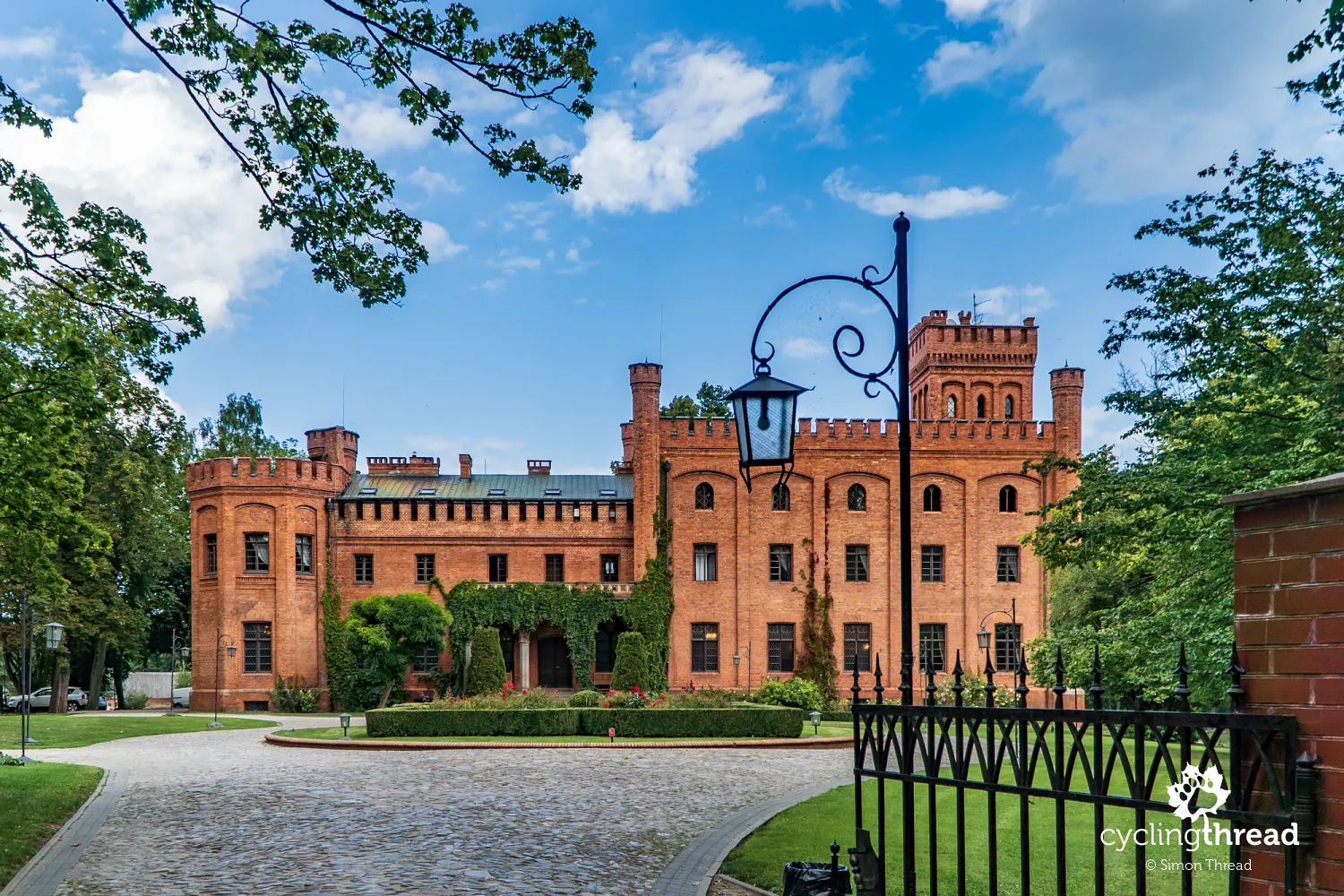
Beka, Mostowe Błota, and the cliff in Mechelinki
Although the coastal cycling route is nearing the Tricity metropolitan area, you'll still pass some striking, natural landscapes. First up is the little-known Beka nature reserve - a vast area where rivers and canals, including the Reda, flow into the Bay of Puck. This unique habitat owes its character to regular saltwater intrusions from the bay, which created rare coastal ecosystems called “salt meadows.” Interestingly, these delicate plant communities depend on traditional grazing and mowing, which help keep reeds and invasive vegetation at bay. A great way to take a short break from pedaling is to follow the educational walking trail around the reserve, which begins near a small observation tower hidden among the trees just off the route.
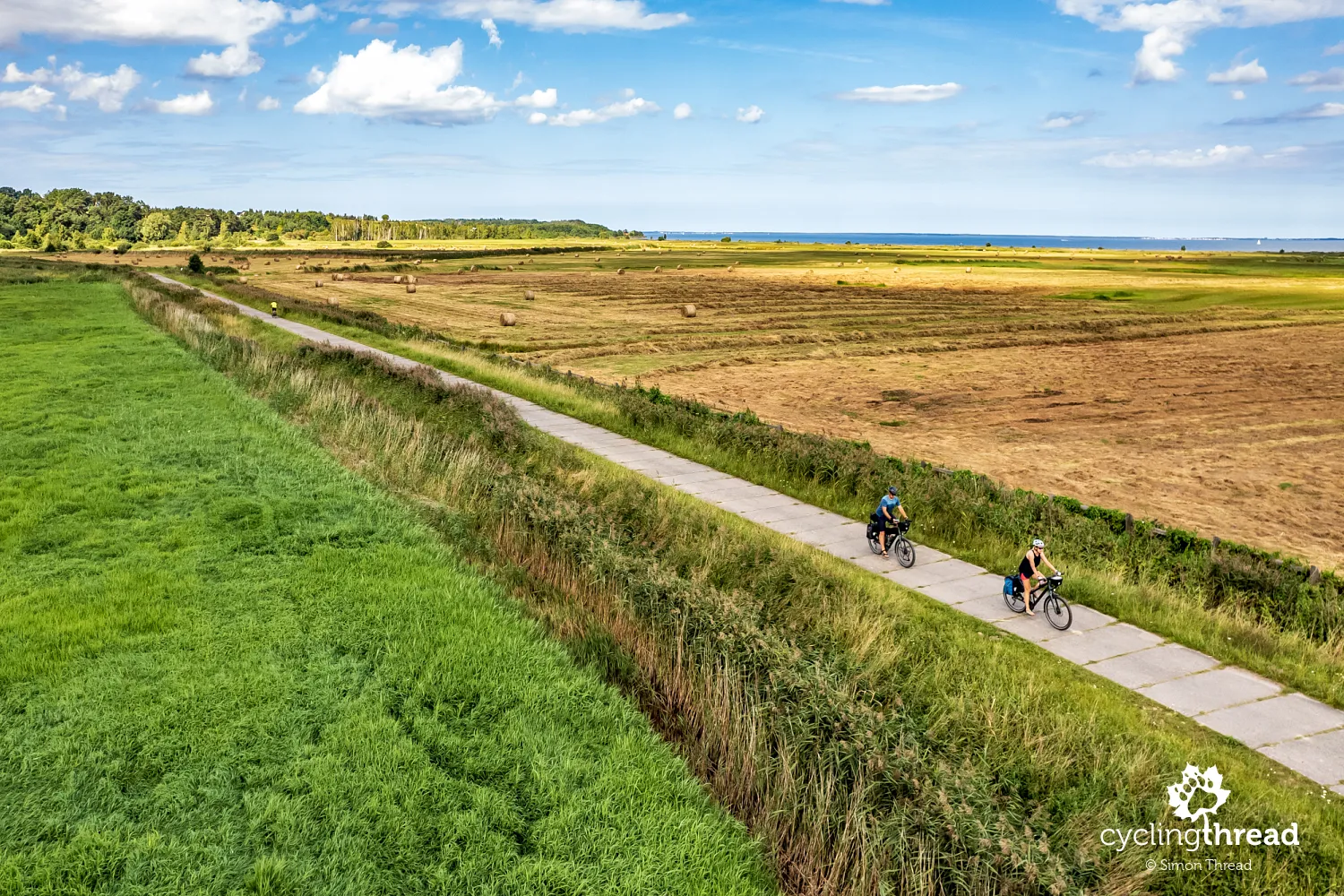
Past the Beka reserve, the route enters another green space, tucked just below the edge of the vast urban zone of the Tricity. This is Mostowe Błota, where a new stretch of asphalt bike path has recently been completed - one of several new additions to EuroVelo 10 that have significantly improved the ride into the city. The old R10 used to run along a busy and dangerous road from Rewa through Mosty and Kosakowo. Now, the new route crosses that road and heads to Mechelinki. In Mechelinki, you can stop by the pier built a few years ago, and then ride just a bit farther to a wild coastal cliff overlooking the Bay of Gdańsk. This cliff has even hosted a few unofficial music events thrown by locals. To enjoy the incredible view, turn off just past the rest stop and climb a short hill - totally worth the extra effort.
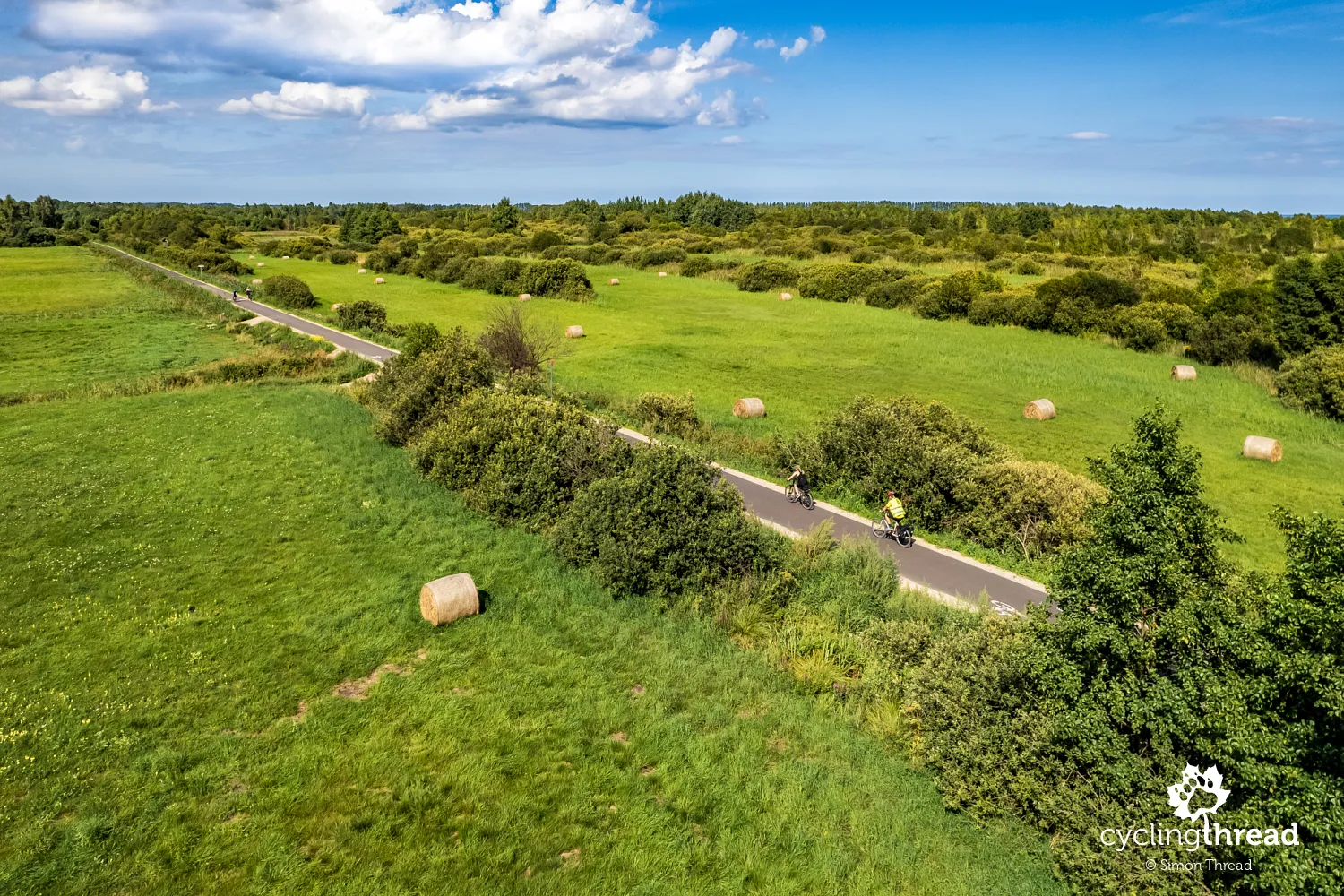
EuroVelo 10 crosses the Tricity
The next stretch takes you straight into the Tricity. As a Gdańsk local, I can say with pride - and a clear conscience - that riding through the Tricity means enjoying well-developed urban cycling infrastructure. While local cycling activists still push (understandably) for perfection, the quality of the EuroVelo 10 route through Gdynia, Sopot and Gdańsk is generally very high. There's still one weak spot - the entrance to Gdynia via Wiśniewskiego Street - but aside from that, the ride is smooth, comfortable, and often quite scenic. In Gdynia alone, you'll find the Kwiatkowski overpass for cyclists, a dedicated lane on Jana z Kolna Street, the popular seaside Bulwar Nadmorski with a bike path, a bike lane on Piłsudski Avenue, and finally, the city's main cycling artery - the bike path along Zwycięstwa Avenue. Writing this as a kind of local host, I have to admit - I envy those of you who still have this experience ahead of you.
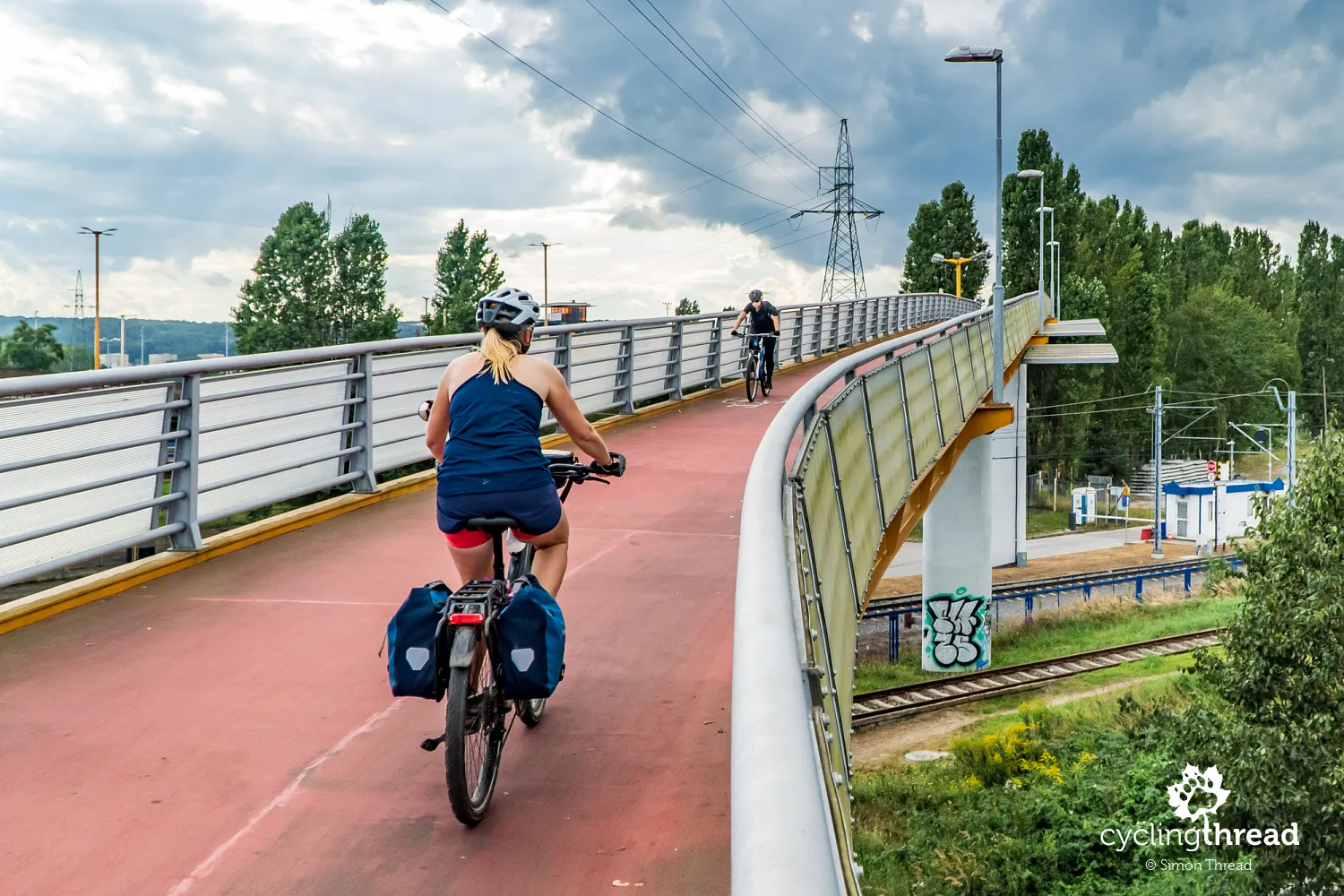
Each of the Tricity cities - Gdańsk, Sopot and Gdynia - deserves at least a few days of exploration. Museums, local flavors, charming corners - there's plenty to enjoy. But this kind of deep dive fits more with city breaks or longer stays than with the rhythm of a cycling journey. That's why I recommend spending a bit more time on just two places while riding through EuroVelo 10: the Emigration Museum in Gdynia and the Amber Museum in Gdańsk. Both are relatively new, both deeply connected to Tricity identity, and both make perfect cultural stops along a coastal cycling adventure.
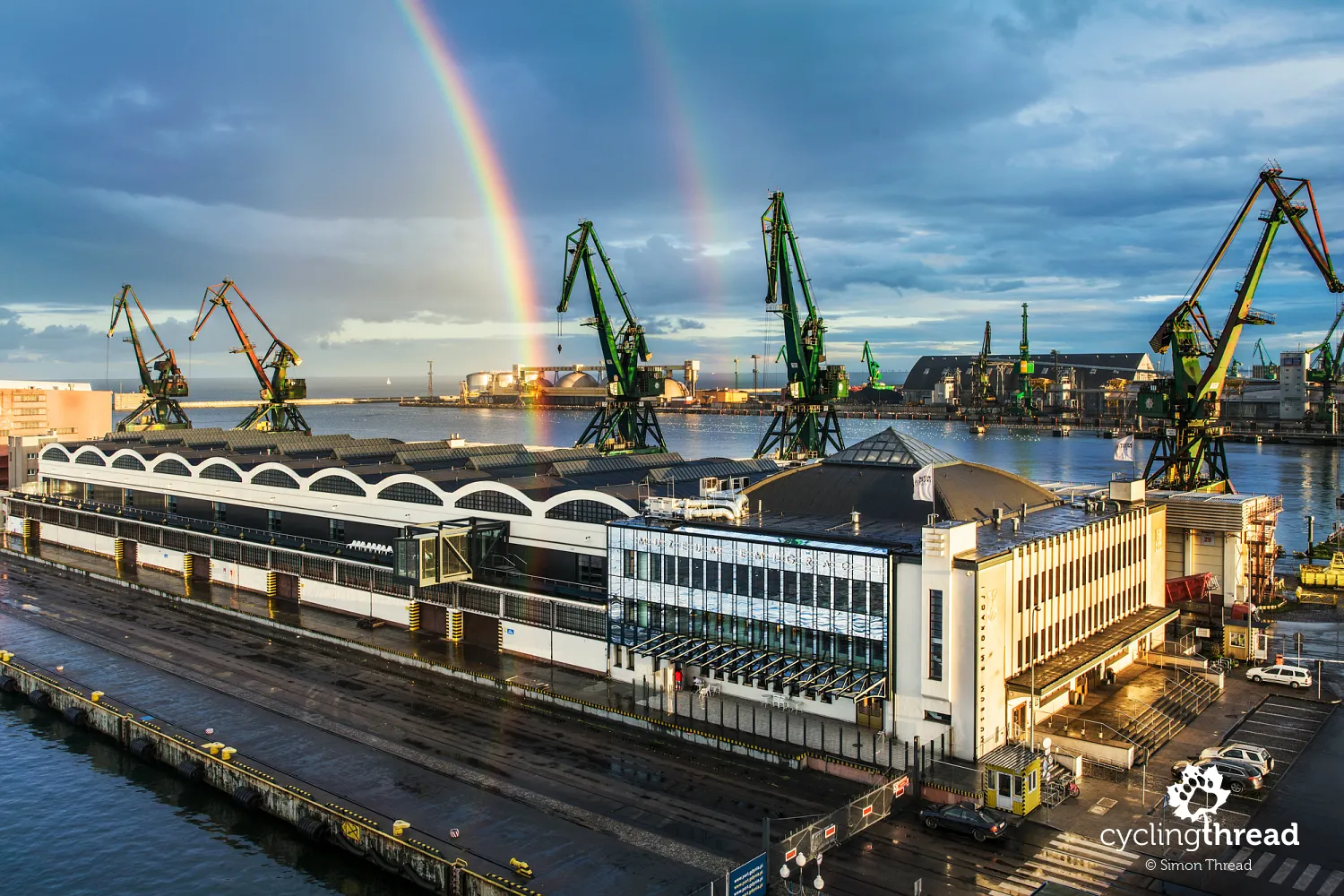
The story of Polish emigration at Polska Street 1
The Emigration Museum is housed in the historic Marine Station building in Gdynia. It tells the story and spirit of Polish emigration - the experiences, challenges, and global influence of the millions of Poles who left their homeland over the past two centuries. Interactive technology and modern storytelling techniques bring personal migration stories to life. The museum also holds a remarkable collection of letters and keepsakes that reflect the deeply personal side of emigration. And the building itself is extraordinary - when it opened in the 1930s, the Marine Station was one of the most modern terminals in Europe. This is where Poles boarded transatlantic ships to seek new lives abroad. Including the Emigration Museum on your ride through Gdynia gives you a chance to soak up more of the city's maritime spirit than you would sticking to the main cycling path through downtown.

EuroVelo 10 on Gdańsk's bike paths
One of the most pleasant stretches of the Pomorskie EuroVelo 10 is the seaside bike route from Sopot to Gdańsk. It's a favorite among both locals and tourists exploring the Tricity on two wheels. The route starts in Sopot's Northern Park, where EuroVelo 10 joins in, and continues all the way to the Brzeźno district in Gdańsk. In Sopot, you'll pass the famous 10 km/h speed limit sign; in Gdańsk, the path is wide enough for four cyclists riding side by side. The seaside route in Gdańsk runs along the edge of Reagan Park - a huge recreational area the city developed from former wasteland. Reagan Park is packed with walking paths, bike trails, running tracks, workout stations, picnic spots, playgrounds, and dog parks.
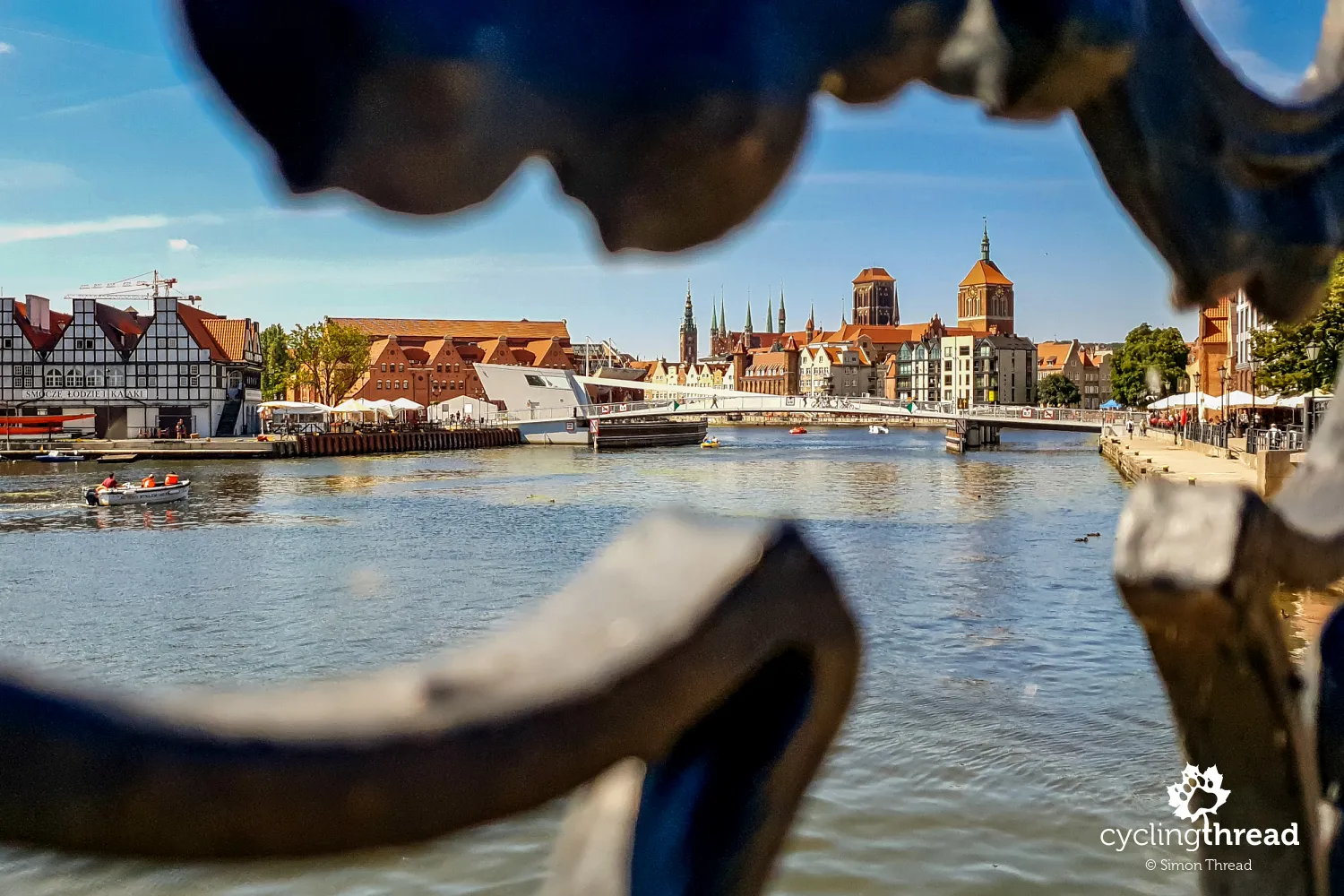
It's impossible to see all of Gdańsk in one visit. But to make the most of your ride through the city, I suggest modifying the standard route slightly: swap Hallera Street for Marynarki Polskiej Street. This small change lets you see the Nowy Port district, the Monument to the Defenders of the Coast at Westerplatte, the historic Wisłoujście Fortress across the Dead Vistula, and the iconic amber-colored stadium built for Euro 2012. It's also a great way to explore Gdańsk's bike infrastructure - including the smartly designed Kliniczna junction and the ever-popular bike path along Zwycięstwa Avenue, stretching from the Baltic Opera to the city center. After riding through Gdańsk's Old Town and the Main Town (often wrongly called the “old town”), EuroVelo 10 continues toward the Vistula Delta. But before leaving the city, as you admire the Długa, Długi Targ, and Długie Pobrzeże streets along the Motława River, make sure to stop at the Amber Museum - a true highlight of your ride through this beautiful city.
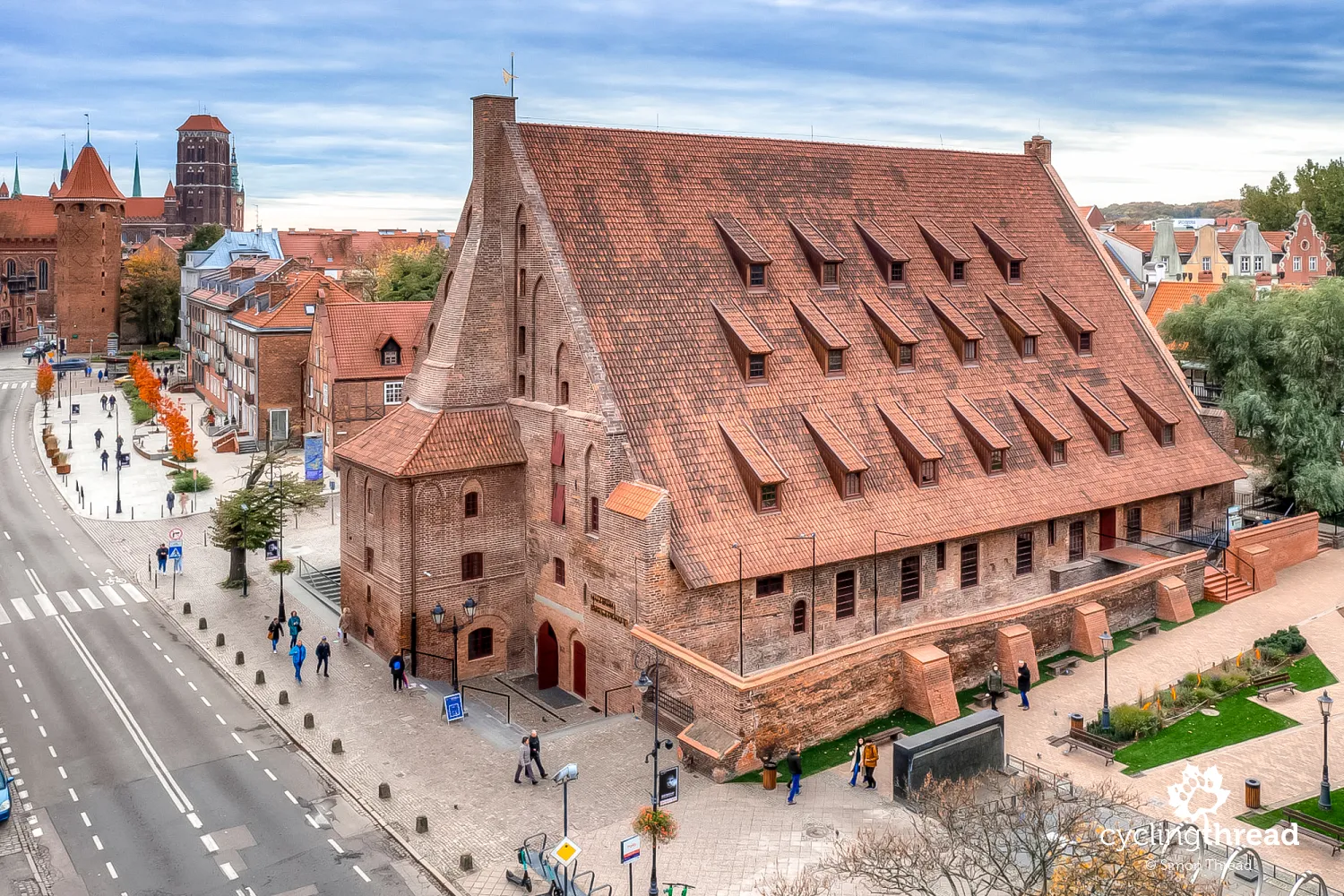
Amber treasures inside the historic Great Mill
The Amber Museum in Gdańsk is a unique space dedicated to the centuries-old craft of amber artistry in the Baltic region. Its new home is the historic Great Mill - once the largest mill in medieval Europe. Located just 100 meters from the Old Town Hall, the museum sits in the very heart of historic Gdańsk. Inside, you'll find an impressive collection of raw and processed amber, as well as exquisite works of art and craftsmanship made with the "Baltic gold." The museum also features interactive exhibits that teach visitors about the geology, history, and techniques of amber processing. Highlights include the world's largest piece of amber - a 68-kilogram chunk from Sumatra - and a set of 330-year-old amber chess pieces that made their way back to Gdańsk after a long journey through the Netherlands and Scotland.
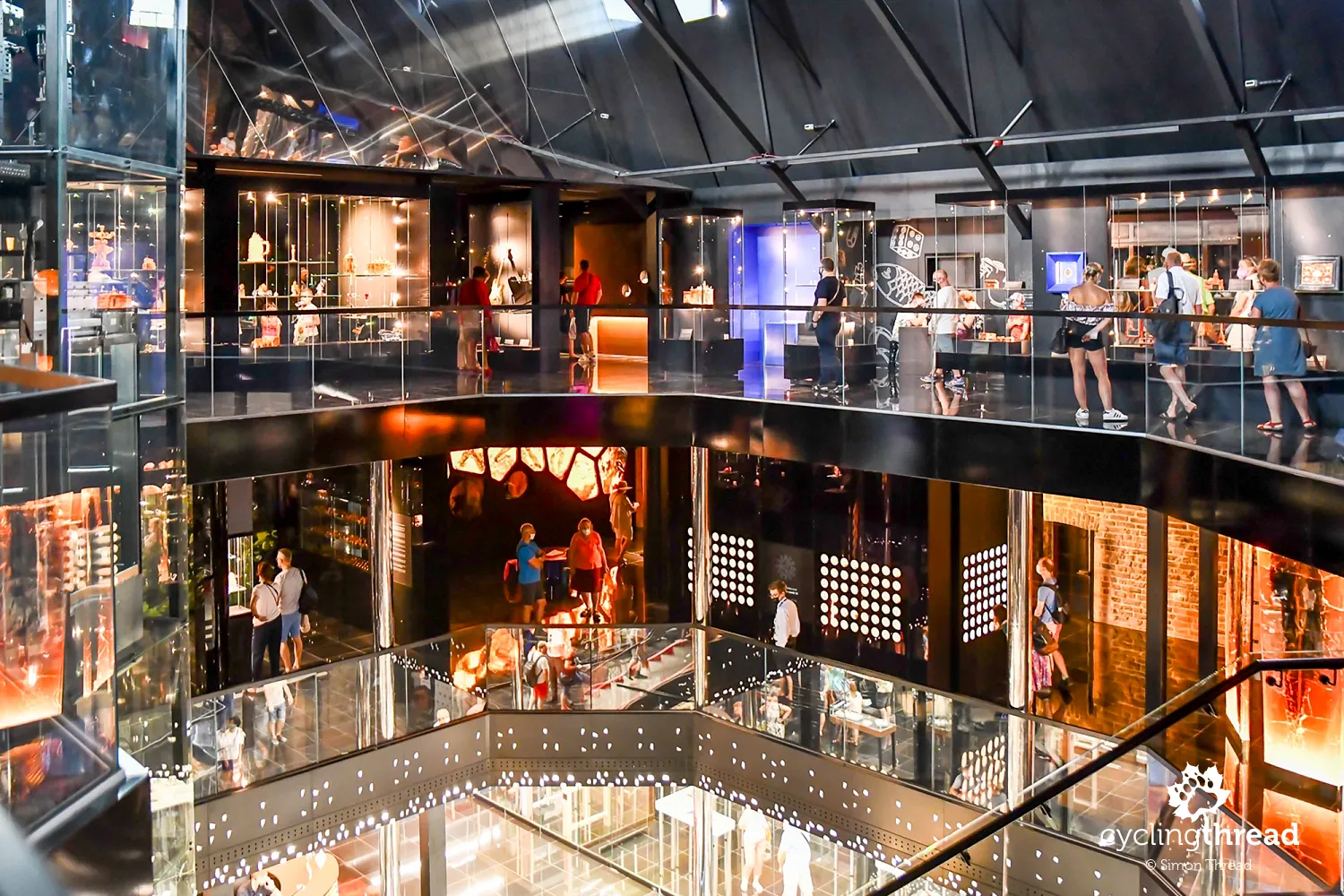
The largest food hall with a touch of history
Since I recommended Reffen - the street food festival in Copenhagen's old port area - while cycling EuroVelo 10 in Denmark, I now invite you to a similar spot in Gdańsk. The Polish equivalent of Reffen is Montownia, the largest food hall in the Tricity, located inside a historic shipyard hall in Gdańsk. It's the perfect place to stop for any type of meal while taking in the industrial heritage of a building constructed by German engineers around 1940. Inside, you'll notice the preserved raw reinforced concrete structure, the original crane operator's cabin, and even cobbled floors with old railway tracks. Despite the nickname “U-boat hall,” there's no evidence that submarines were ever assembled here - this was only a warehouse, first for the Kriegsmarine shipyard and later for the famous Gdańsk Shipyard. Still, the revitalized space in the historic heart of the city is impressive and popular with Gdańsk locals.
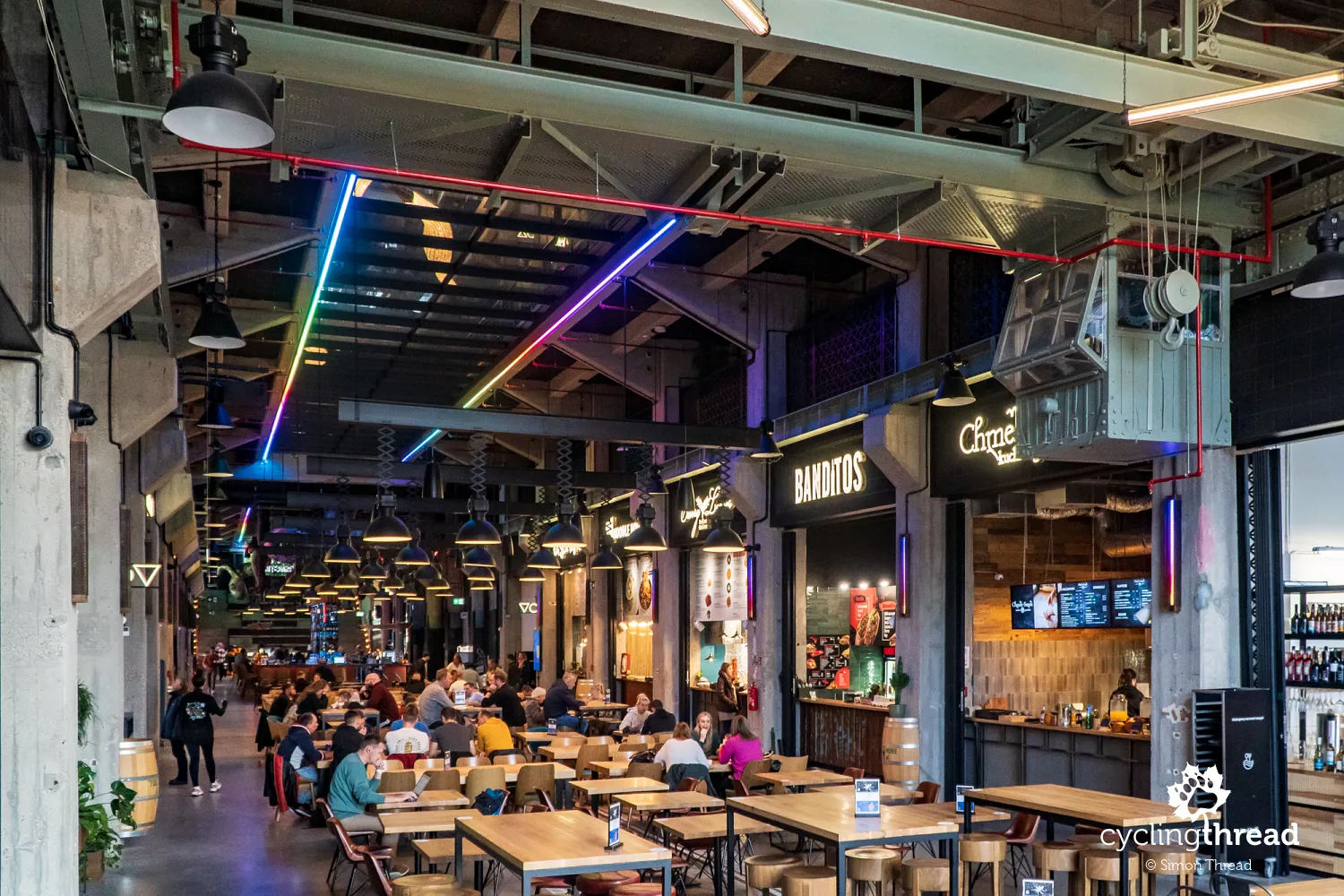
Beyond the Tricity: Vistula Spit and the Vistula Delta await
Gdańsk isn't the end of the Polish section of the Baltic Sea cycling route. EuroVelo 10 continues toward Sobieszewo Island and the mouth of the Vistula. After crossing by ferry in Świbno, you'll reach the spectacular Vistula Spit and Vistula Delta. One of the connecting routes of the Baltic trail, marked R10, runs here - about 50 kilometers from Mikoszewo on the Vistula through Jantar and Stegna to Krynica Morska and Piaski near the Russian border. This gravel and forest route is a great choice for a grand finale to a multi-day journey along the EuroVelo 10 in Pomorskie - and also a favorite for day trips by Tricity locals.
R10 route on the Vistula Spit
Back to topUnexpected charm of the Vistula Delta
The Vistula Delta is one of those under-the-radar destinations that surprises many cyclists along the route. This unique region lies in the delta of the Vistula River and is known for its low-lying land, often below sea level. The area is rich in history - particularly the legacy of Mennonite settlers, who shaped much of the local landscape and culture. Highlights include historic churches, traditional arcaded houses characteristic of Mennonite architecture, and peaceful countryside perfect for relaxed rides and quiet walks. Cyclists will be happy to know that EuroVelo 10 passes by several of the Delta's gems - including the original swing bridge over the Szkarpawa River, still used by the narrow-gauge Żuławy Railway.
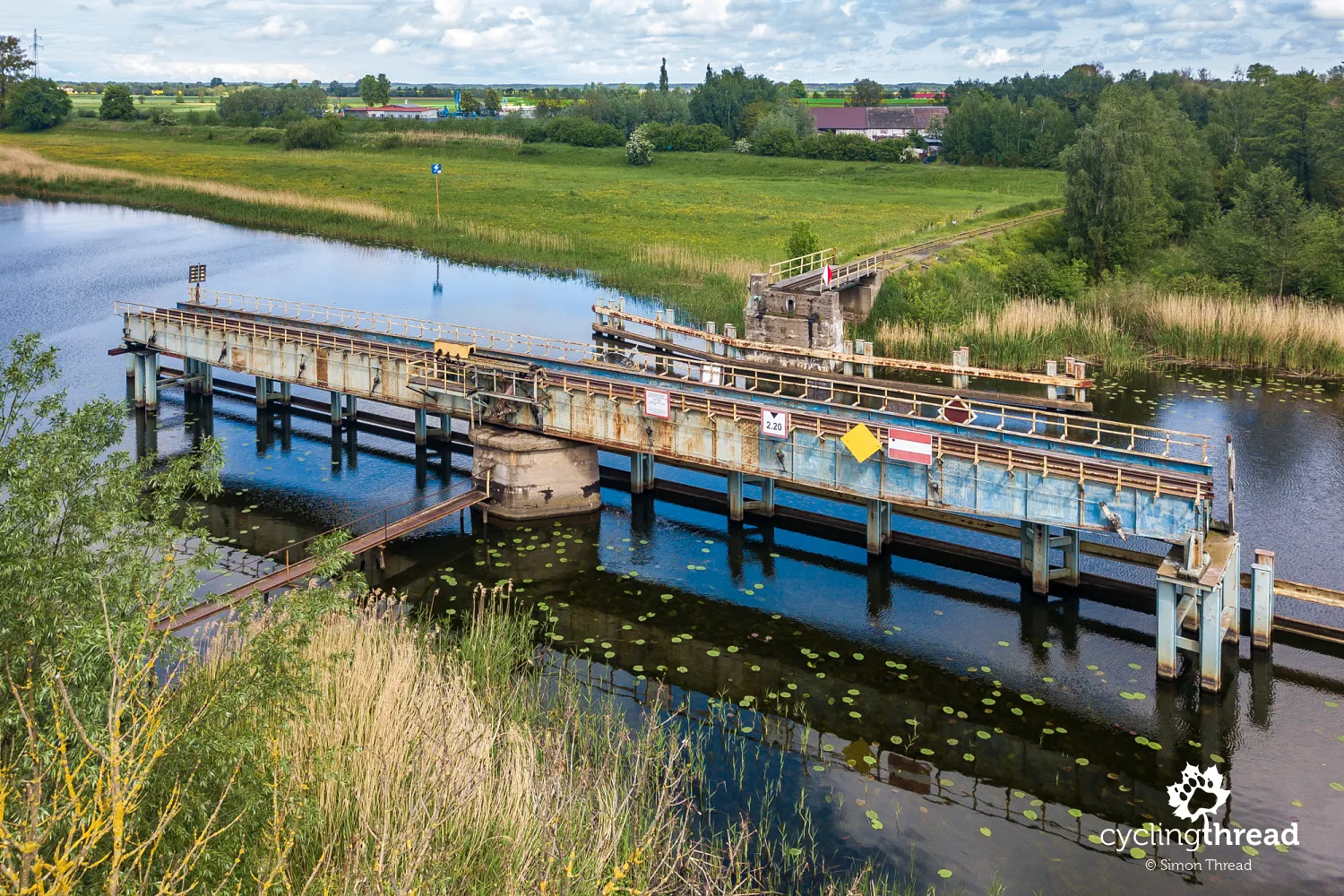
A meal and some heritage in Cyganek
Cyganek, part of the village of Żelichowo, is a former Mennonite settlement and a perfect spot for a short break and a taste of the region's heritage. Here, just steps apart, you'll find the Mennonite lapidarium known as the Cemetery of Eleven Villages, the “Mały Holender” restaurant serving regional cuisine, and a historic Gothic church dedicated to St. Nicholas - now a Greek Catholic church. If you're wondering whether it's worth stopping in Cyganek, just check out the dishes: crayfish soup, fried crayfish, Mennonite stew and Werderkäse - a local cheese recently revived in a nearby Kociewie creamery.
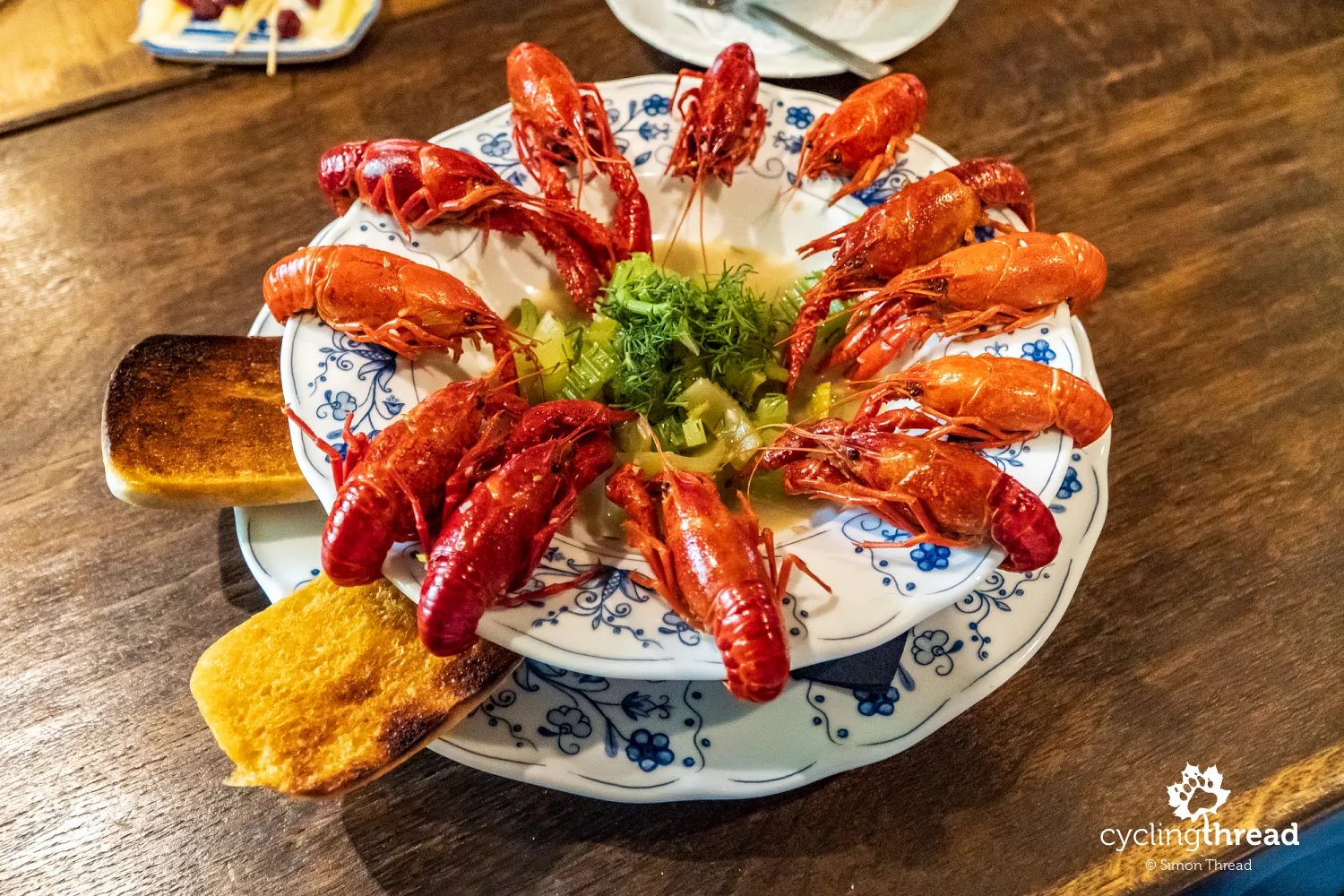
One last great cycling stretch
The section of EuroVelo 10 between Tujsk, Cyganek and Nowy Dwór Gdański deserves a mention. It's one of the most scenic - perhaps even the most attractive - cycling routes in Poland. The path runs atop a classic Vistula Delta flood embankment along the Tuga River, surfaced with concrete “yomb” slabs with openings. While these are usually disliked by cyclists, here they've been modified - with the holes removed from the center - and laid precisely for smooth, comfortable riding. This stretch also diverts bicycle traffic away from the previously dangerous road between Nowy Dwór Gdański and Rybina, improving safety and ride quality immensely.
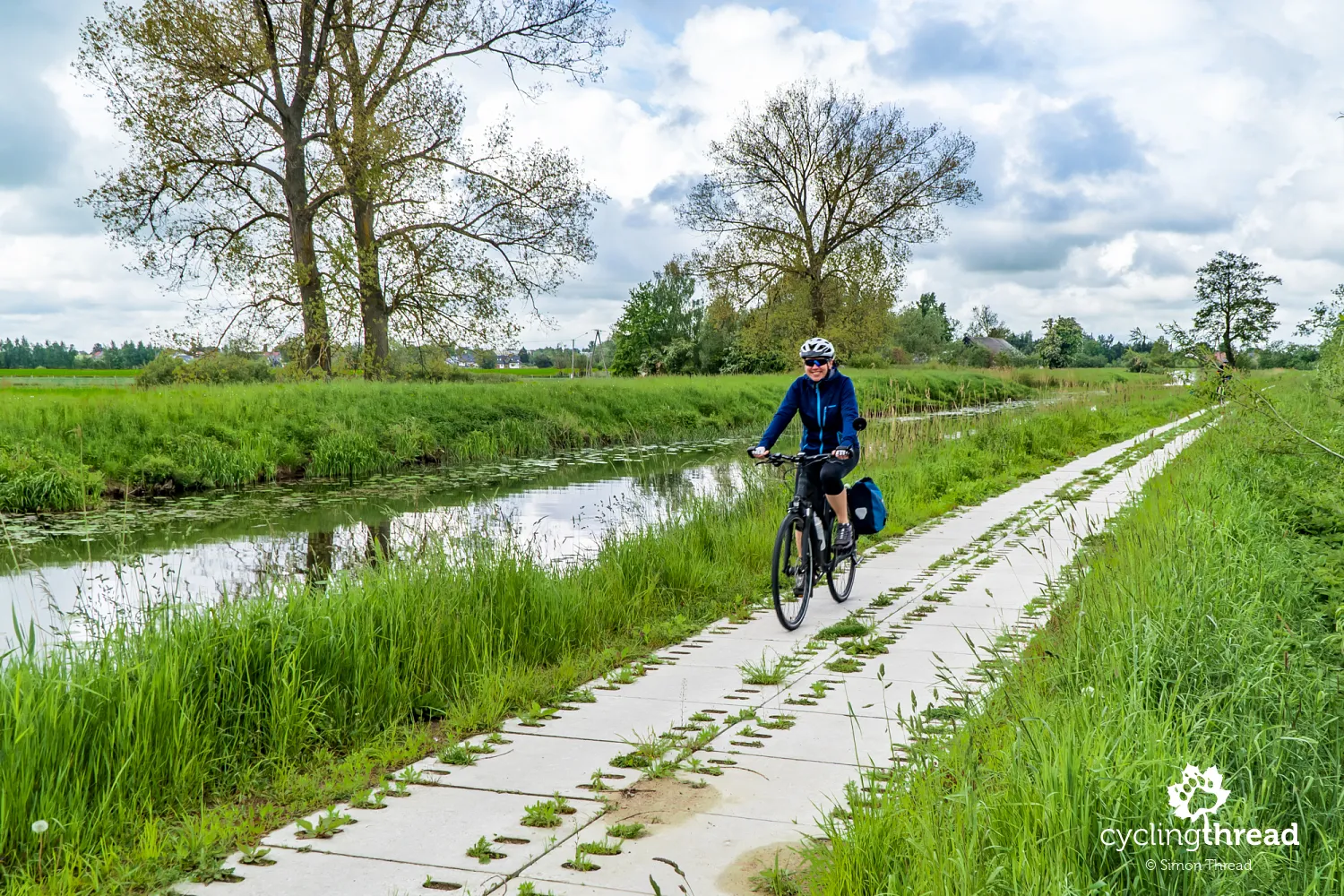
Almost final stop: Nowy Dwór Gdański
The last major stop along the route is Nowy Dwór Gdański, which became a town in the second half of the 19th century during the reign of Emperor Wilhelm I of the Hohenzollern dynasty. That's when the network of narrow-gauge railway lines was built - including the Żuławy Railway, which still runs today. Breweries, sugar refineries, and other factories made Nowy Dwór Gdański an important local hub. You can explore this history at the Żuławy Museum, which also highlights the story of the Mennonites and their contributions to both the historical and modern identity of the region. One of the museum's most notable artifacts is a windmill - or at least the surviving parts of one - which returned to the Delta after years of being relocated.
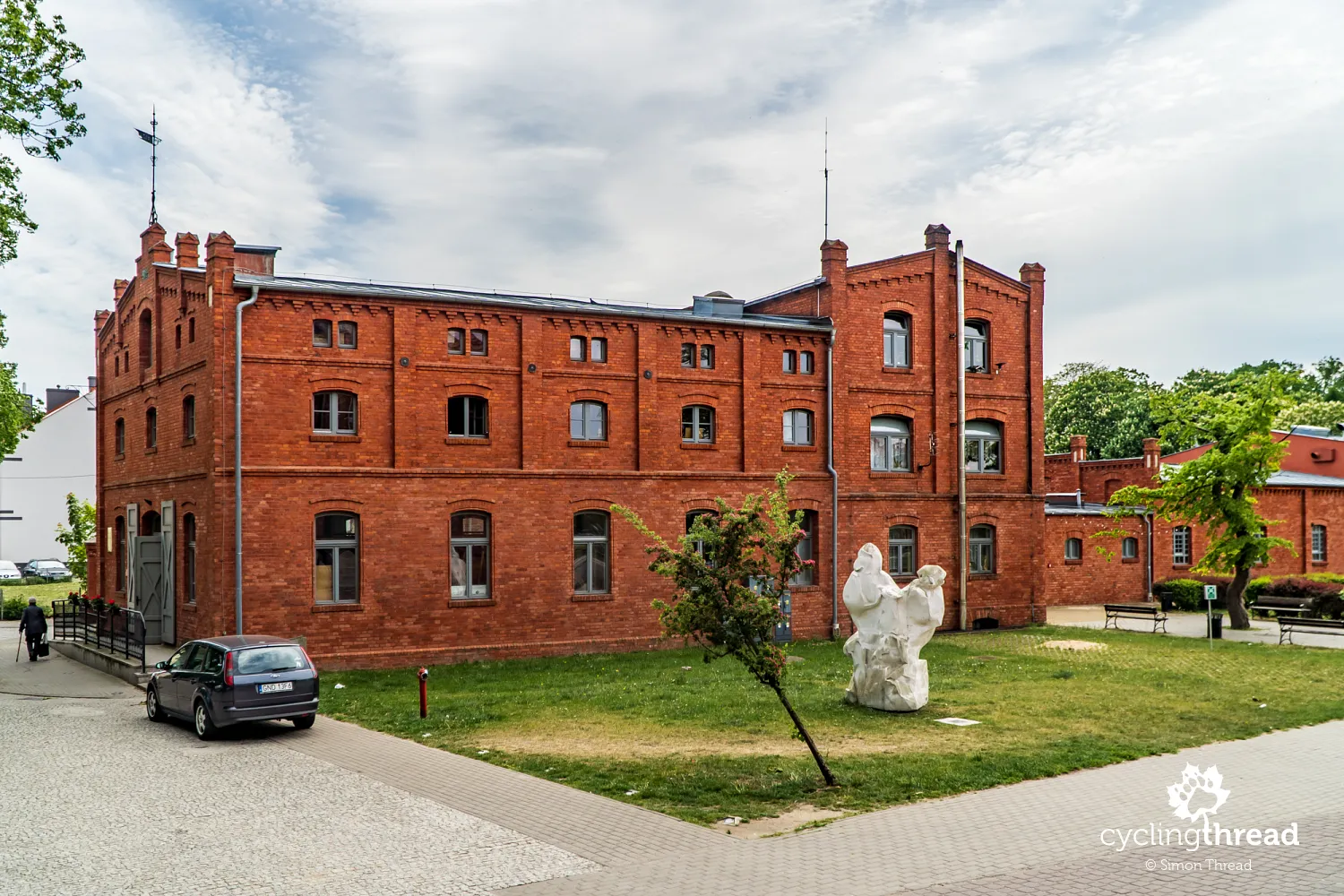
To Latvia, Green Velo, or home
Just a few kilometers past Nowy Dwór Gdański, when the route joins a wide bike lane marked on National Road 7, it's worth stopping to check out at least two more points of interest. First is the old Mennonite cemetery in Różewo - visiting it may involve wading through tall grass that's slowly taking over the site. Then comes Kmiecin, with its beautiful Gothic church, a perfect example of Żuławy's historic character. After that, it's a few more kilometers along the old "Route 7" - now mostly empty, as most traffic has shifted to the newly built expressway running parallel. This takes you to Elbląg, which marks the practical end of the Pomorskie section of EuroVelo 10. From here, you can either continue along the Baltic Sea Cycle Route - perhaps all the way to Latvia and its quiet, underrated coastline - or veer inland on the Green Velo route toward Olsztyn, Białystok, maybe even Zamość or Rzeszów. Or just hop on a train and be back in your own bed by nightfall.

Taking the train with a bike on EuroVelo 10
Rail plays a major role in making the Baltic Sea route in Pomorskie more accessible. Thanks to convenient connections with Słupsk - and even direct long-distance trains from Warsaw - Ustka is an ideal starting point for a Pomorskie EuroVelo 10 trip. In summer, you can also take a train to Łeba, and further along the route, Puck has a train station too. At the eastern end, there's Elbląg, also well-served by rail. For our ride from Gdańsk to Ustka, we used the weekend Lazur train from Warsaw. Unfortunately, our Koga bikes with wide, two-inch tires didn't fit the narrow racks, so we ended up blocking the train doors. Not ideal, but it was the only way to transport our bikes this time. Or maybe it was just bad luck with our wagon number?
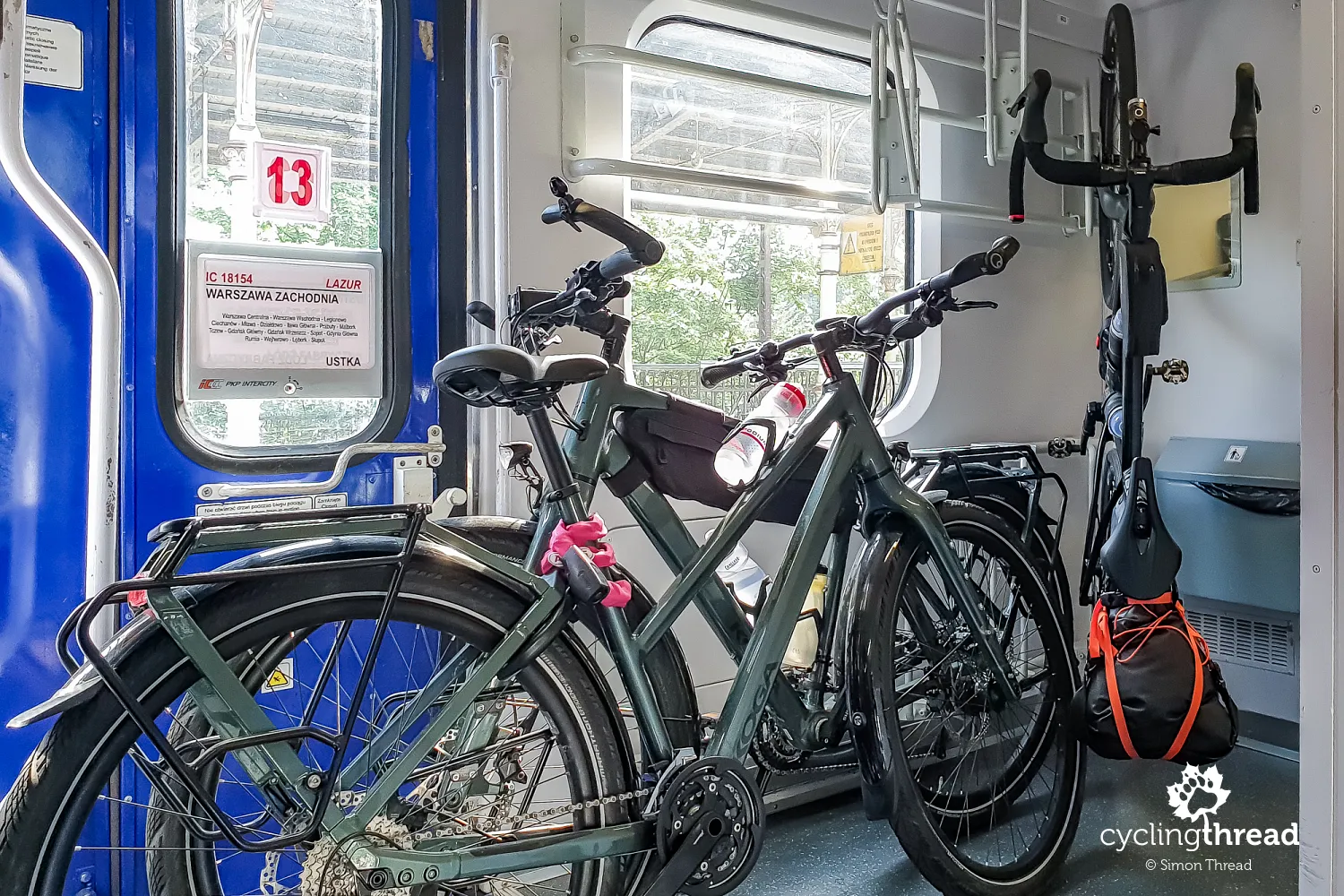
Which is better - Pomorskie or West Pomerania?
The Velo Baltica project, or EuroVelo 10 in West Pomerania, started earlier and is more advanced. As a result, the West Pomeranian region can boast more kilometers of smooth asphalt bike paths - raising the experience there to something closer to Western European cycling standards. On the other hand, the Pomorskie route, though it has fewer asphalt stretches, offers more variety in landscapes and leads through far fewer beach resorts and tourist towns. West Pomerania has some show-stopping wooden walkways and pedestrian-bike promenades along the sea, but it's Pomorskie that boasts two spectacular spits - Hel and the Vistula Spit - each with its own R10 connector route, adding more layers to the cycling adventure. So rather than choosing between them, your best bet is to plan a longer trip and ride both.
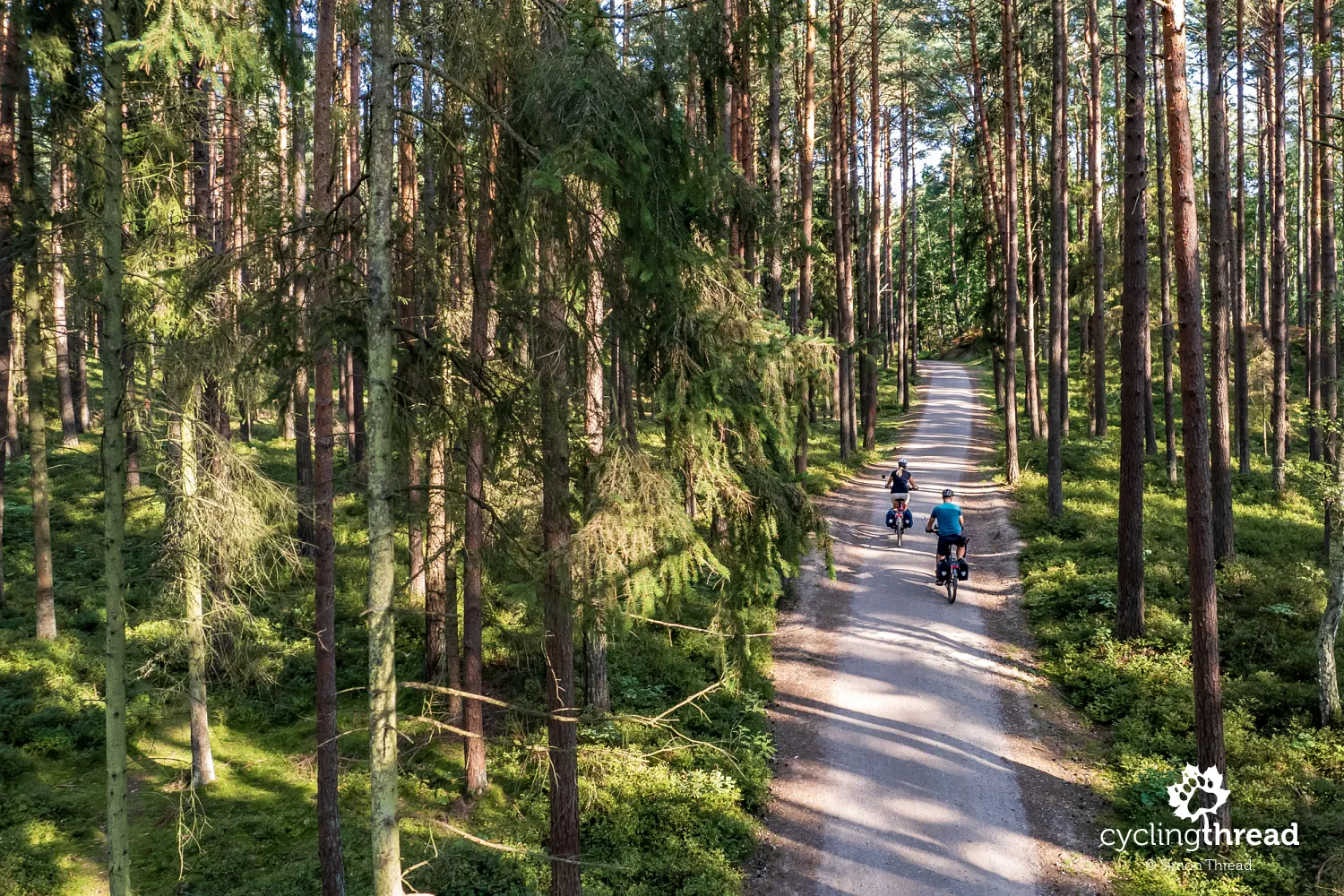
EuroVelo 10 in Pomorskie among Poland's best
Finishing my ride along EuroVelo 10 in the Pomorskie region, I was genuinely pleased to see it stand among the best cycling routes in Poland - alongside Małopolska and West Pomerania. Beyond this “big three,” no other Polish regions are currently doing as much - or as well - for cyclists. And the good news is, there's more to come: the second phase of the Pomeranian Cycling Routes project is about to begin, bringing more new surfaces and improvements. Sure, we might still grind our teeth on the occasional Słowiński sand, but the Pomorskie stretch of EuroVelo 10 is already a route that thousands of cyclists ride each year, returning home with panniers full of memories. No question - this one belongs on your lifetime must-ride list.
Back to top
Have a safe ride! 💚
Simon Thread
(Szymon Nitka)
I'm a passionate cycling traveler and the voice behind Cycling Thread. I explore Europe on two wheels, documenting the most scenic routes, inspiring places, and cyclist-friendly practices. My writing blends personal experience with practical insights and a deep love of travel. I'm also a contributor to National Geographic Traveler magazine.



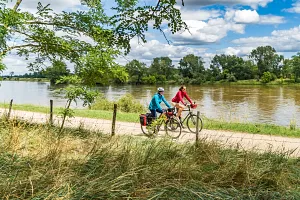

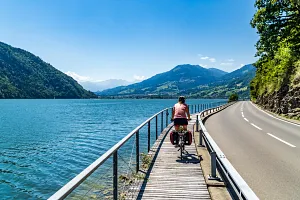
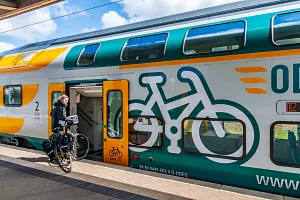
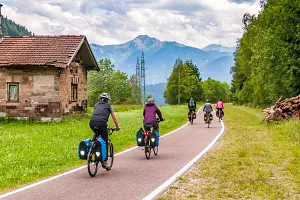
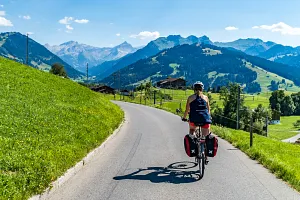
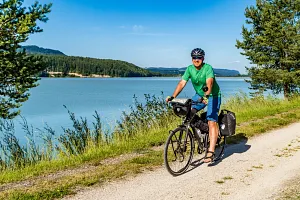
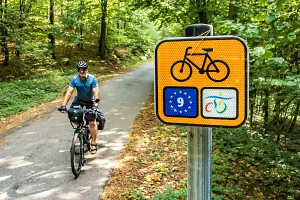
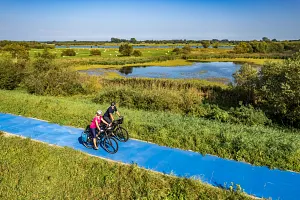
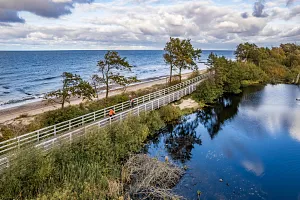
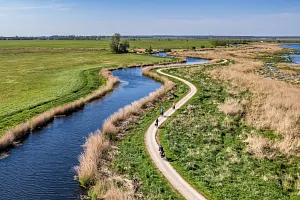
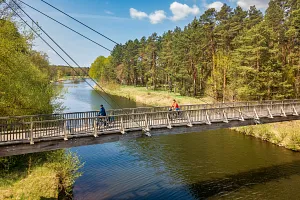
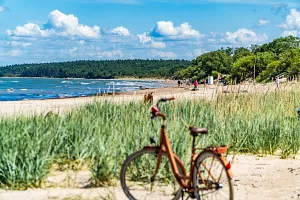
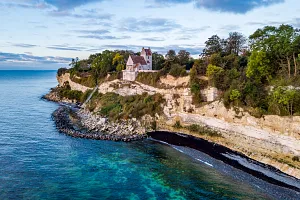
Your Comments
Add new comment